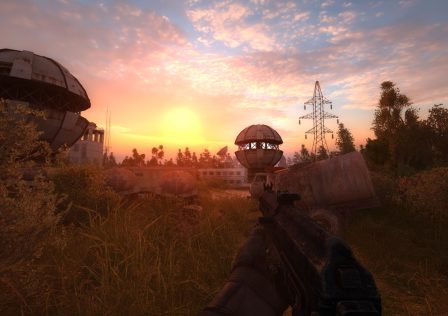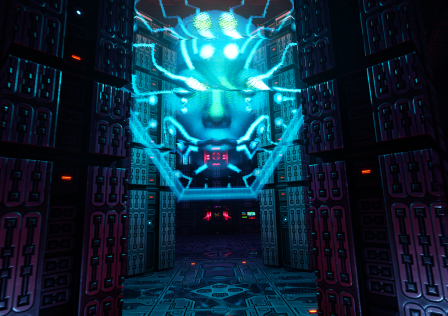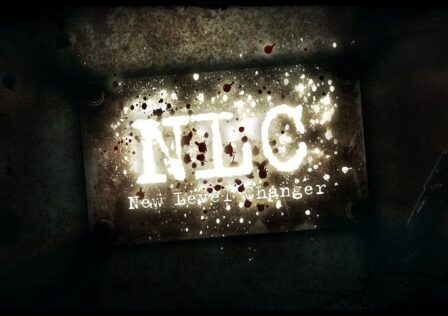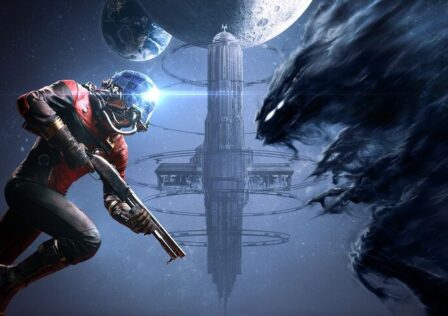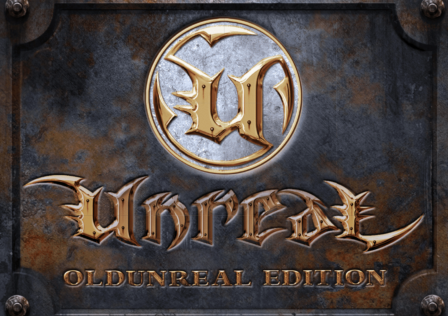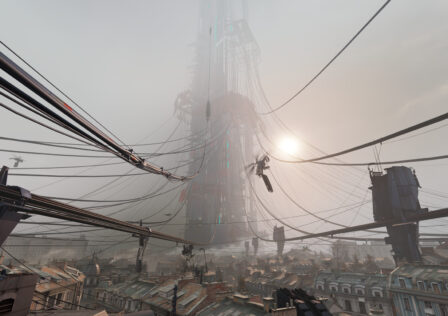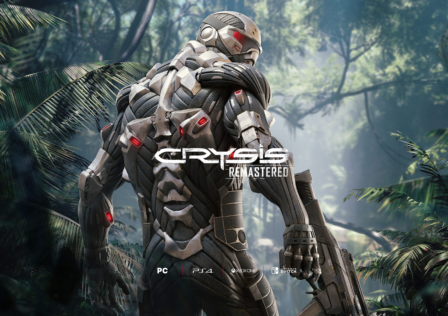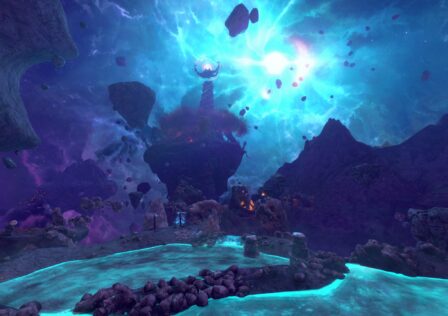Following the success of the amazing S.T.A.L.K.E.R.: Shadow of Chernobyl, GSC Game World started work on a prequel game – S.T.A.L.K.E.R.: Clear Sky. It released to mostly positive reception but in much the same way that Shadow of Chernobyl split the gaming community, Clear Sky managed to tear the S.T.A.L.K.E.R. community. It was quite the divisive title when it released.
It is obvious that we here at GND-Tech are fans of the series in general and gave an exceptional score to Shadow of Chernobyl (referred to as SoC from now on). Clear Sky is, for both good and bad, a somewhat different beast. Let’s see how GSC managed with their ambitious prequel!
Graphical fidelity and Audio
| 64-bit | No (Engine mods may have it) |
|---|---|
| Linux Support | Unofficial, janky |
| Graphics API | DirectX 10.1 |
| Frame Rate | Unlocked |
| High Resolution Support | Yes |
| Ultrawide Support | Flawed |
| High Refresh Rate Support | Yes |
| VR | No |
| Display HDR | No |
| Ray Tracing | No |
| Multicore CPU Support | 1-1.5 cores |
| Adjustable FOV | Config file |
| Anisotropic Filtering | 16x |
| Anti-Aliasing | A-Tested MSAA |
| Sound API | OpenAL |
| Sound | Up to 7 channels |
| UI Scaling | No |
| Debug Console | Limited |
| Modding | Yes (Source Code) |
The release of Crysis was the hallmark of visual technology in 2007. GSC Game World knew they had a fairly short development cycle with Clear Sky, but an upgrade to DirectX 10/10.1 had to happen. Choosing only the most important features for immersion ironically also made Clear Sky become one of the best showcases of DX10’s potential.
The engine’s renderer got 2 new levels introduced. The first one is DX9 Enhanced Dynamic Lighting which was a complete overhaul of what DX9 could offer. The second one is Enhanced Full Dynamic Lighting (DX10) which later got patched to include the DX10.1 upgrade.
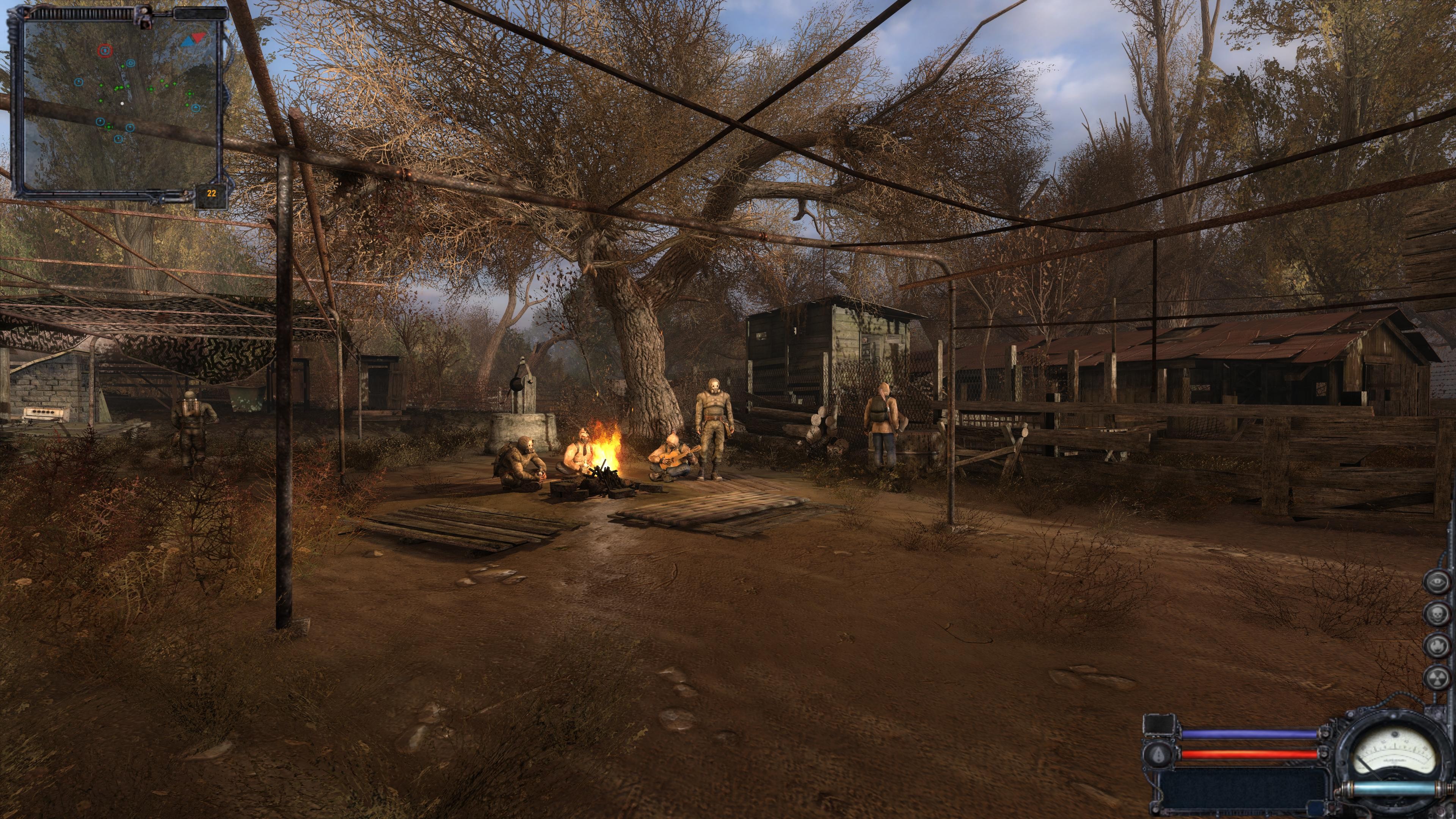
Steep Parallax mapping which makes surfaces seem even more realistically detailed was introduced and actually has a good effect on image quality, especially on brick structures. Some modern games, even in 2019, still cannot quite match Clear Sky on this front.
The lighting system was updated with an increase in the richness of sunlight and its quality as well as a new dynamic Sun Ray effects which appear during the game’s morning and evening. Volumetric lighting also makes an appearance and makes certain light sources look amazing. The combination can at times be breathtaking and the fully dynamic nature of this technology’s implementation here impresses even 10 years later.
Credit to PC Gaming Videos for this one.
This is one of the first games to introduce Screen Space Ambient Occlusion(SSAO). Whilst still early and unrefined, the technology already shows its worth. Clear Sky’s lighting system greatly benefits from SSAO and more complex scenes gain from the added perceived depth.
Soft Water which blends the edge of the water surface more realistically with the surrounding environment is a new DX9 and 10 feature, greatly improving the water rendering to pretty respectable standards for its time. Not Crysis level, not even close, but a clear step above other titles.
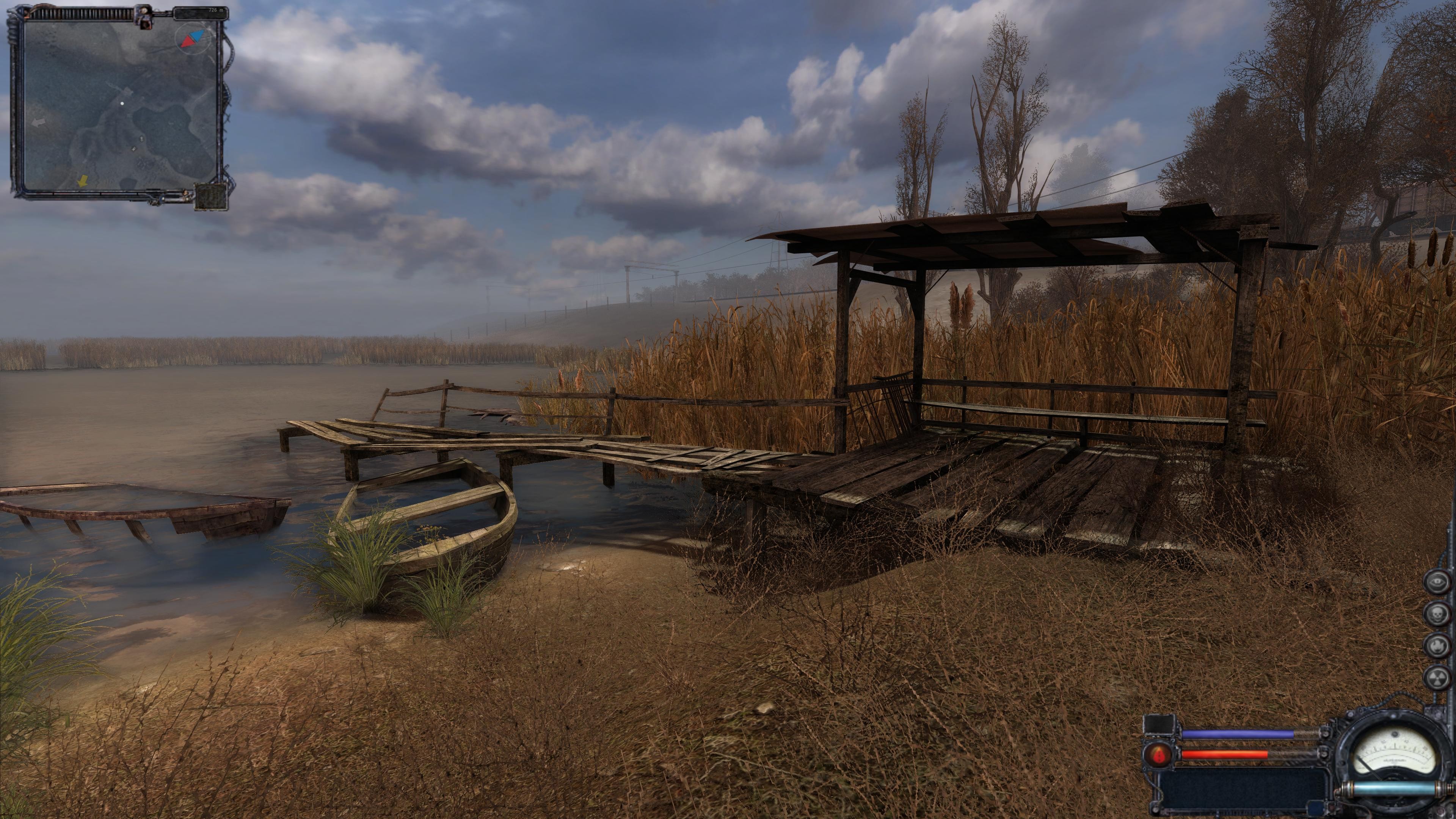
Soft Particles which make fog, smoke, and other particle effects blend smoothly with their surrounding environment make their appearance. Whilst not Crysis level and not used in all situations where they would make sense, this does improve many of the game’s effects and looks very nice even to this day.
Depth of Field was also introduced into the engine. It usually just results in a slight blurring when focusing on an object, such as when reloading your gun. Unfortunately, whilst cool, the effect is a bit too strong and overused, making it damage immersion instead of improving it.
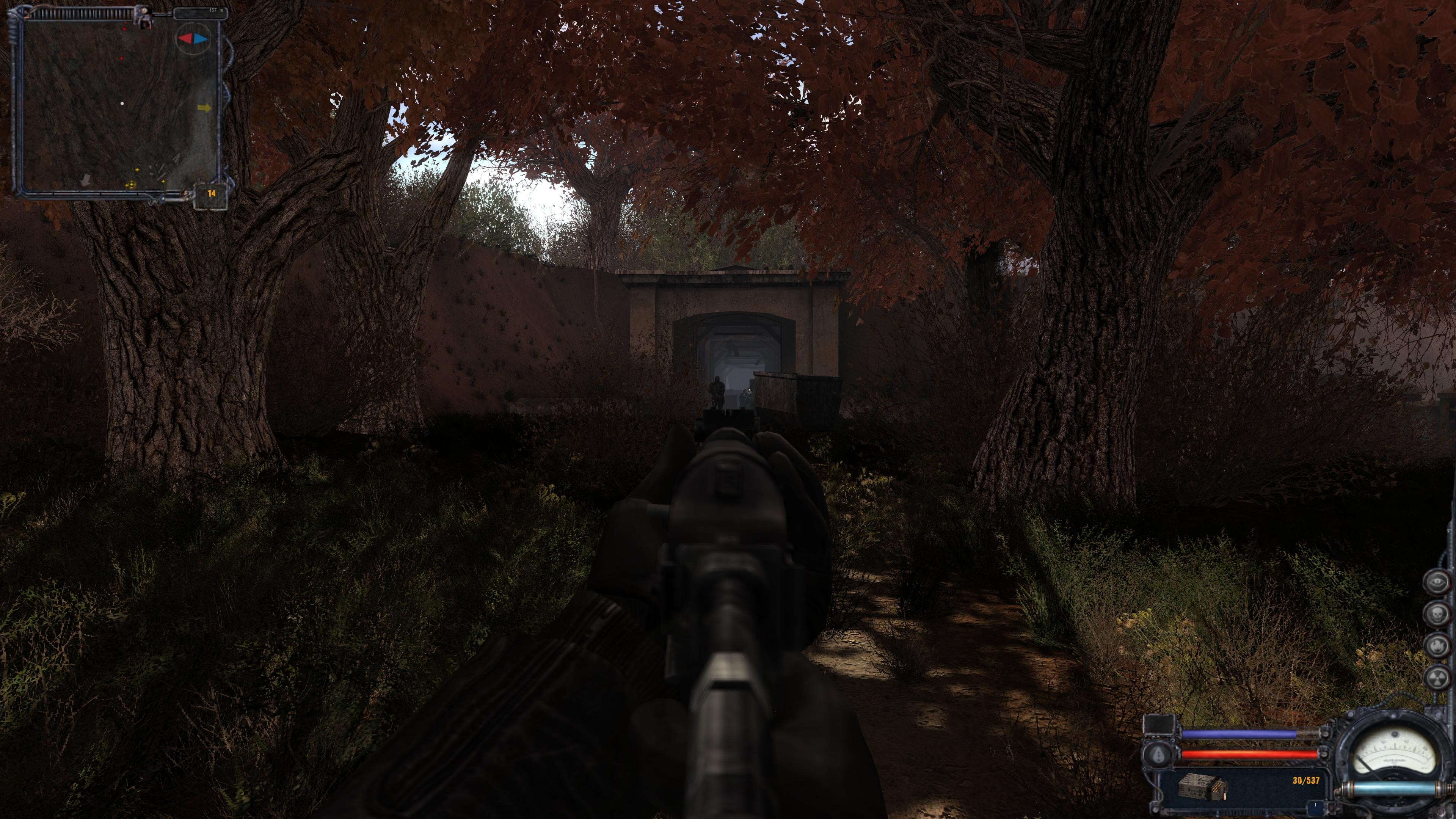
Volumetric Smoke, which allows for more realistic smoke and fog effects was introduced in select game areas. Such effects are rarely seen even in modern games, unfortunately as they are really cool. Dynamic Wet Surfaces which allows water to flow along walls and almost all other surfaces (including characters) much more realistically have been implemented. This is the first time an open-world game has implemented such visual technology and one of the better hallmarks to this day. A massive improvement to immersion.
The animation system received a much-needed overhaul. Inverse Kinematics were introduced, making characters move more realistically on sloped surfaces. Some animations were added, others overhauled and others still were removed. Along with improved ragdolls and superior meshes, the animation has taken a dramatic step forward over Shadow of Chernobyl. Still, it is only “decent” by 2008 standards and not really equal to its time’s best games. Also, the facial animations received little focus and as such still look 2003 level, at best. Not much of an issue since most characters have armor and/or masks, but it can be noticed on some plot-important NPCs.
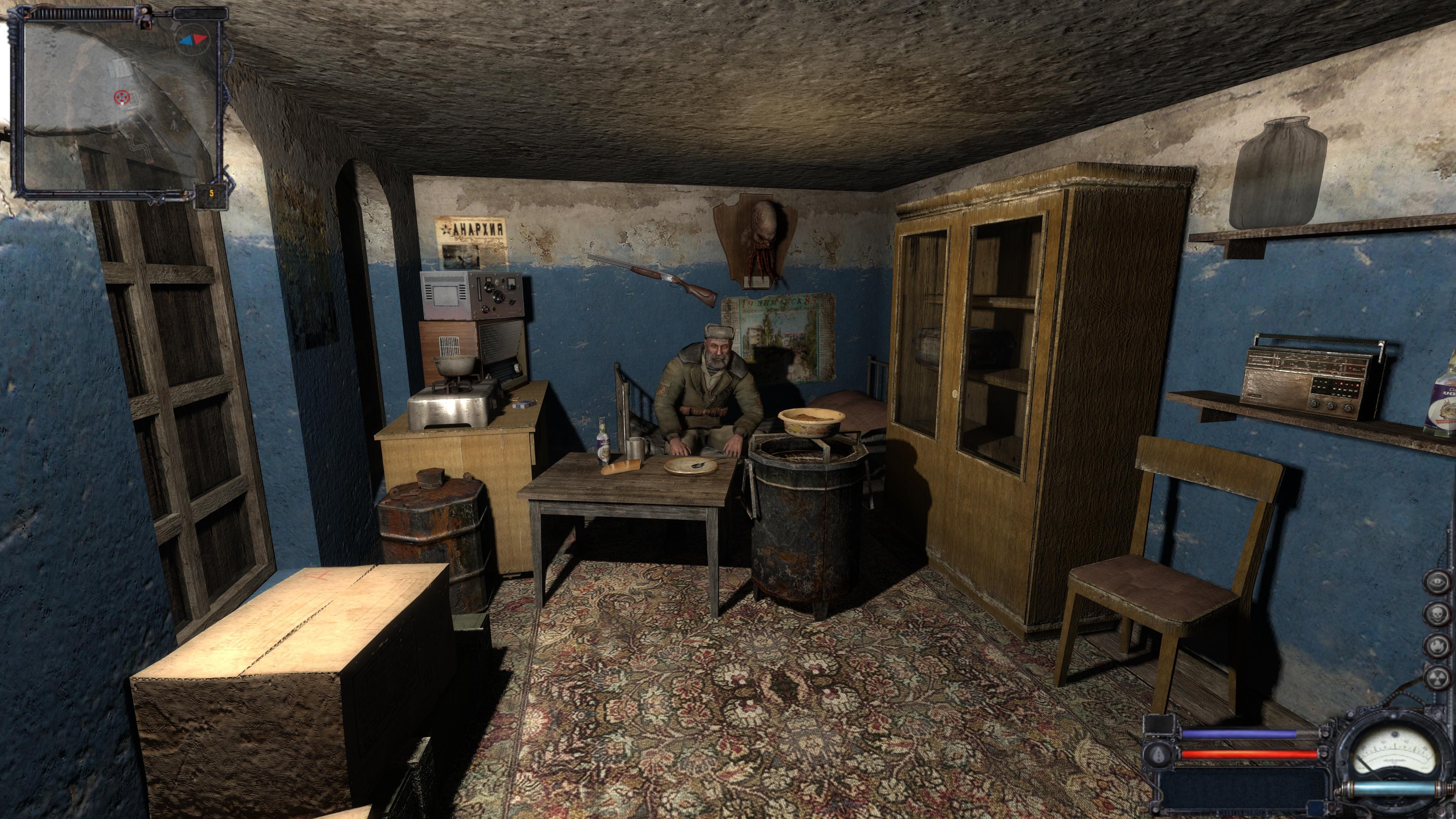
GSC also redid many objects and textures. Clear Sky has some very high-quality textures for its time as the team used high-quality photographs from real-world Ukrainian objects when making them. Character and mutant models were slightly improved too.
The DX10.1 patch to the game slightly improved performance and also added the intensive A-Tested MSAA DX10.1 method of Anti-Aliasing. It is a very demanding type of anti-aliasing but does help the game look a lot better. Certain shadows and sun effects also got slightly better looking to boot as their luminosity is more exact now.
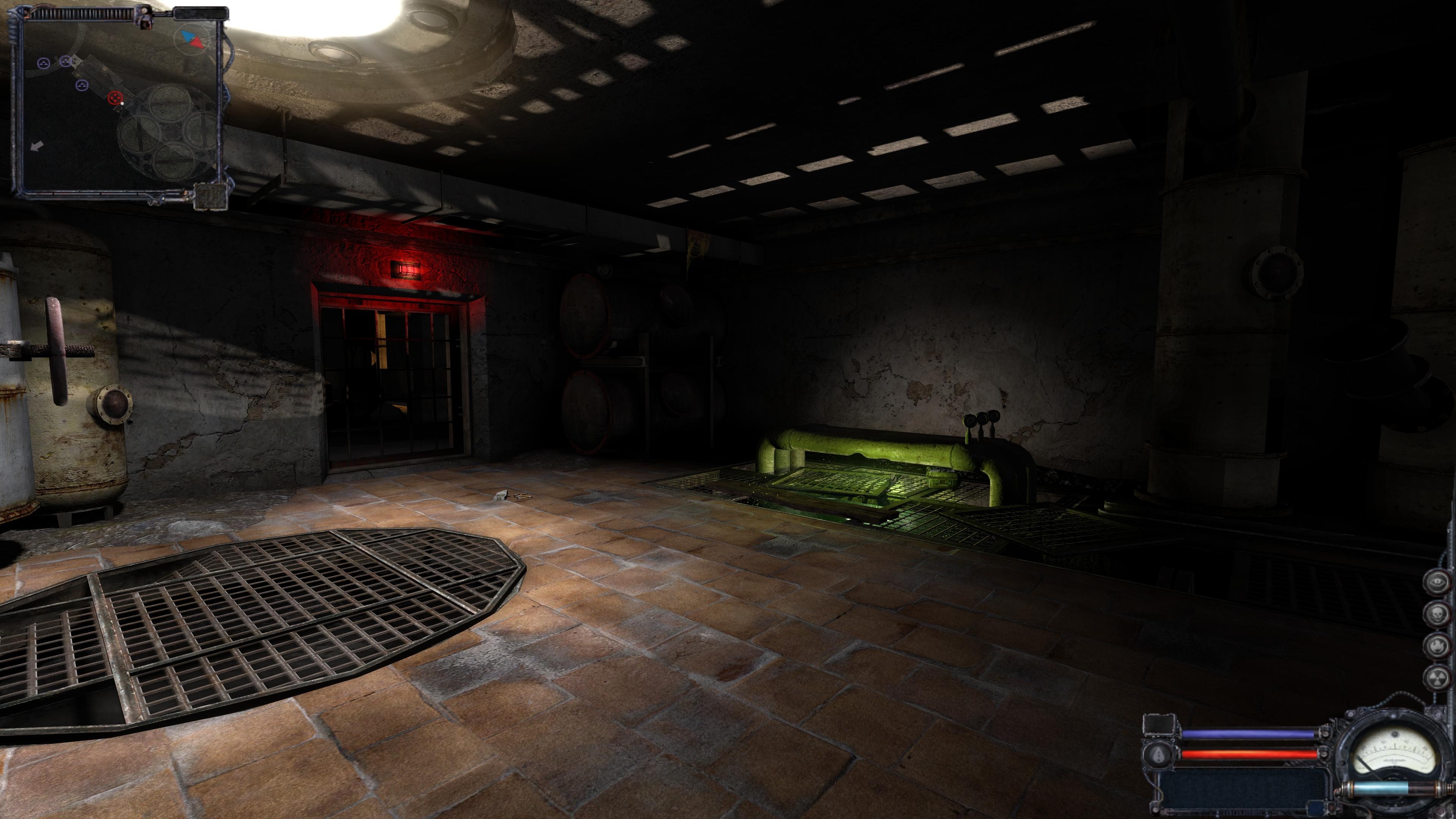
Physics received a slight rework but the only thing that seems to have been impacted was ballistics and ragdolls. They are both noticeably better than in SoC.
Clear Sky has the same audio engine as Shadow of Chernobyl. One added feature though is new dynamic combat music. It can be turned off and most people (including I) dislike it, but its implementation in the game is otherwise interesting. It monitors whether the player is in combat, what they are fighting and the general flow of the fight to tie in audio cues and make a dynamic soundtrack. It takes some CPU cycles to execute though and the already stressed X-Ray engine is better off without this feature.
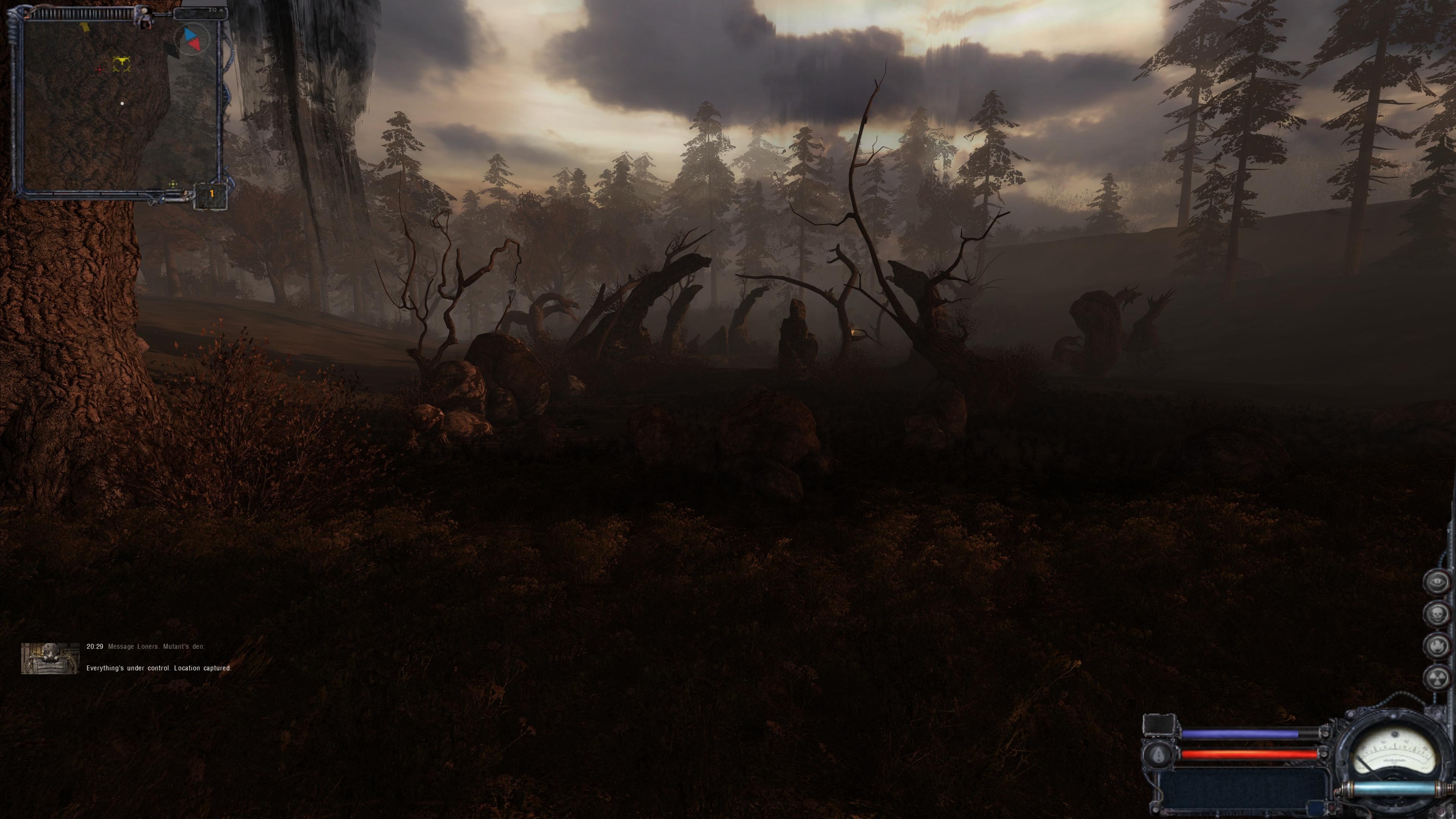
All three S.T.A.L.K.E.R. games use the OpenAL API and support EAX 2.0. It is strange that it uses such an outdated version of EAX, but it is better than none. Note that none of the S.T.A.L.K.E.R. games have an abundance of actual environmental effects; enabling EAX only improves directional sound.
All three games let you choose output device, although in Shadow of Chernobyl it must be done through the console or in its configuration file (user.ltx) while Clear Sky and Call of Pripyat have an option for it. To enable its advanced audio effects such as EAX and hardware acceleration, you must have a Creative sound card and select it as your output device. If none is present, then you are left with Generic Software output device and no special effects. I am unsure if ASUS sound cards can emulate these effects via software (by simply selecting one as the output device). Modern Creative sound cards, namely Recon3D and Sound Core3D models (aka Z series) process OpenAL HRTF and EAX through software. Only X-Fi sound cards will get you hardware acceleration, which sounds so much better.
Since the S.T.A.L.K.E.R. games use OpenAL, this means they can be modified to use OpenAL Soft. This is an open-source, completely software-based implementation of OpenAL with its own custom HRTF. This means those without a sound card aren’t truly stuck using Generic Software output. To use OpenAL Soft, download it and place the 64-bit soft_oal.dll file into the bin folder for each S.T.A.L.K.E.R. game, and then select OpenAL Soft as the sound device. This will get you 3D sound processing and thus much better directional sound; stereo users (whether headphones or speakers) get a binaural sound replication, while surround users simply get better directional sound. It isn’t as good as hardware acceleration via X-Fi however.
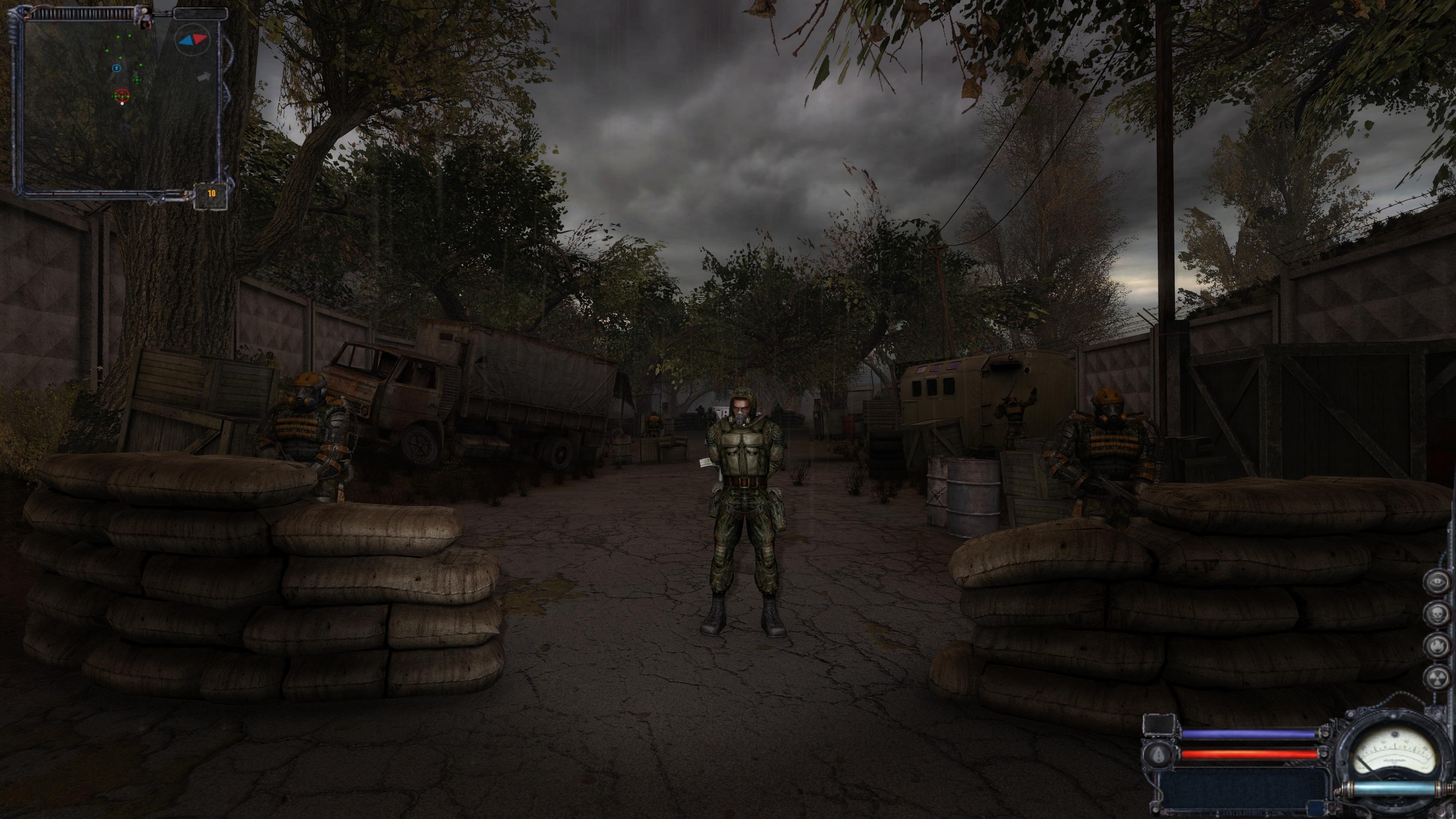
The S.T.A.L.K.E.R. games are also compatible with Rapture3D, which requires a sound card but ultimately is only about as good as OpenAL Soft anyway. Hardware acceleration via X-Fi sound card yields the best sound.
To truly get the most out of these games, I highly recommend using the Creative Sound Blaster X-Fi Titanium HD sound card (the highest quality X-Fi sound card) and a 5.1 surround setup (it doesn’t support more than that). All other X-Fi sound cards, except maybe the X-Fi Go! Pro (which might not be true X-Fi), do not have proper driver support for Windows 7/8/10 while the Titanium HD does, so the Titanium HD should provide a glitch-free experience, unlike the others.
S.T.A.L.K.E.R.’s sense of 3D space and directional sound are second to none, at least when excluding the Y-axis. It doesn’t do much with regards to height replication though honestly, a newer and better EAX version (or OpenAL EFX using the latest instructions) is required for that. Still, every sound has its own 3D space, even things that normally don’t like thunderstorms. This, combined with the dynamic wet surfaces, impressive lighting effects, and full dynamic shadows (these things being restricted to Clear Sky and Call of Pripyat), result in the most immersive, atmospheric thunderstorms of any game. The rain engulfs you, every thunder strike has its own 3D space so it isn’t just coming from the front channels like other games, it can strike from anywhere.
The use of bass is also extraordinary in these games. It is most notable when thunder strikes, in the proximity of gravitational anomalies (these rumble my apartment), and during emissions which also cause my apartment to shake. Never again can I play a S.T.A.L.K.E.R. game without hardware-accelerated surround sound, the benefits are too immense. Every sound, big and small, is greatly improved thanks to the outstanding 3D HRTF. Little things like moving through bushes, which allows me to truly hear myself moving past them as they fade from in front of me to behind me. It gives me a tactical advantage as well, being able to better place the sounds of someone talking or the growls of a mutant.
The sense of distance provided by S.T.A.L.K.E.R.’s sound processing is very good. Distant sounds are distinct and authentic. The only room for improvement with sound processing is the use of all the latest OpenAL EFX instructions, providing a better sense of height, more environmental sounds (occlusion, dynamic echoes/reverb, more simultaneous environments, distortion effects, and even better 3D sound thanks to features such as MacroFX and PurePath (or whatever they are referred to by EFX).
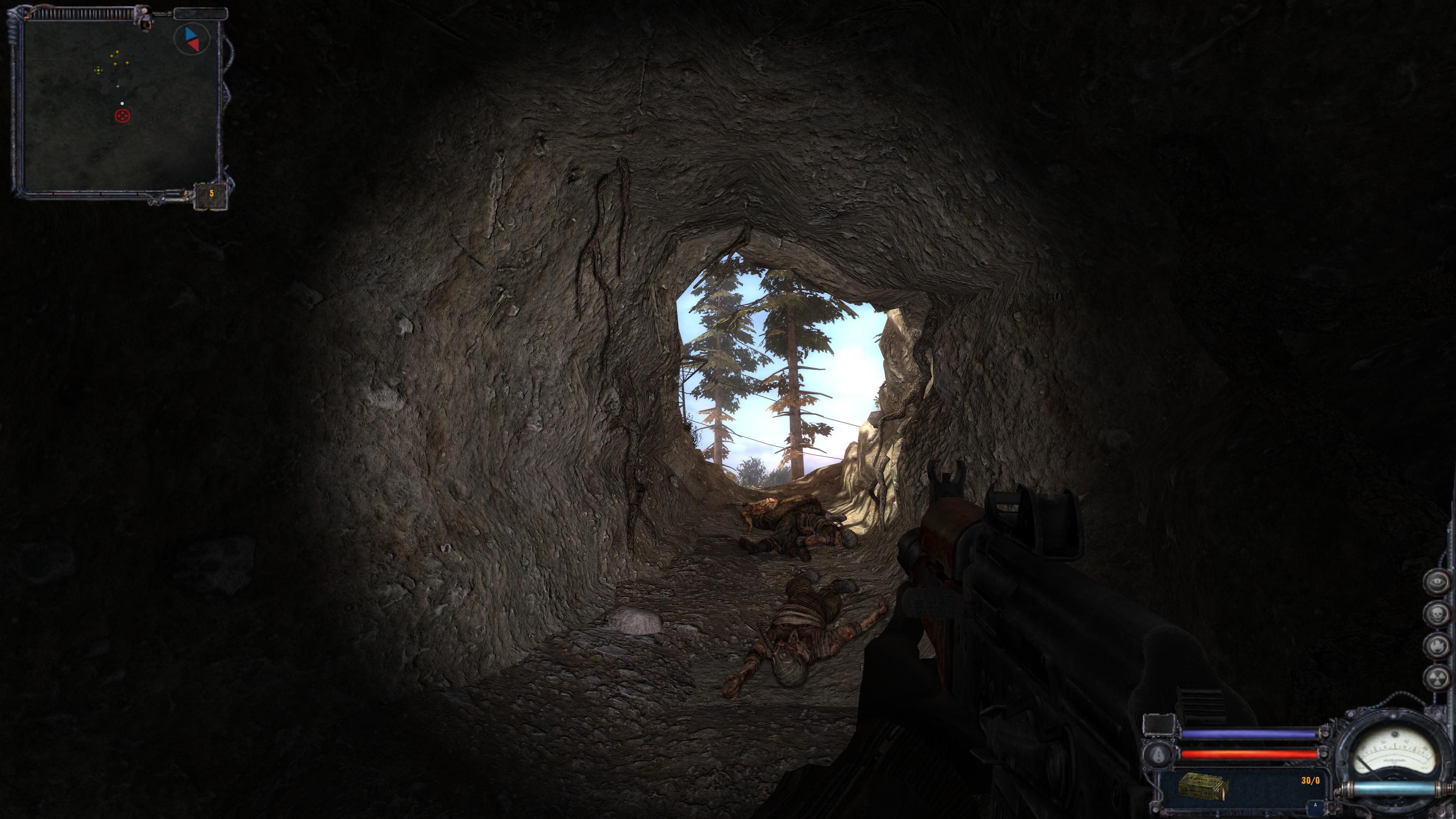
All in all Clear Sky was a clear step up from Shadow of Chernobyl in almost every way. It was also one of the prettiest video games of 2008, coming the closest of all other games to matching Crysis Warhead, overall. In fact, certain vistas in the game can still look impressive even today, in 2019, at max settings. Something very few 11-year-old games can flaunt.
Presentation
S.T.A.L.K.E.R.: Clear Sky is available on Steam, GOG, and retail. It is pretty darn cheap these days and is often on sale. The GOG version has zero DRM so that is the one we champion the most, but all allow for virtually the same amount of modding.
When it comes down to art style and design, something that is almost always more important than pure fidelity, GSC Game World knocked it out of the park yet again. Atmosphere and immersion were obviously the primary objectives for almost every part of the game’s very essence.
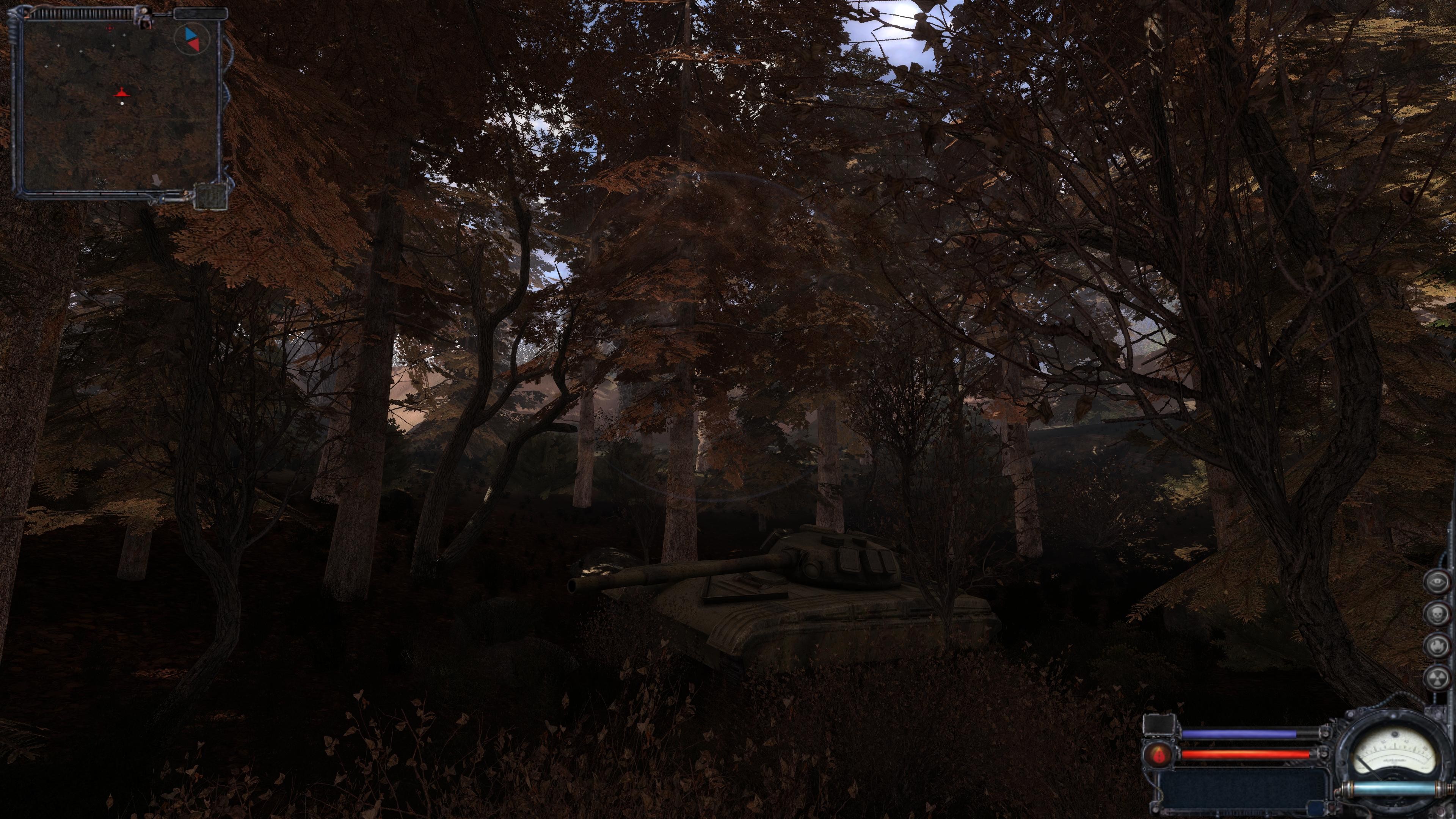
In our Shadow of Chernobyl review, we said that the game world was very much bleak and oppressive, with some macabre but also beautiful vistas and a very horror-like look and feel. Clear Sky is not quite like that. While the game takes place in many of the same maps and areas, the actual art style has seen a noticeable shift to brighter and more serene landscapes. No longer are the maps constantly gloomy, the game’s title of “Clear Sky” seems to also describe its new look and feel. Some fans of Shadow of Chernobyl did not like this change to a brighter, more colourful Zone, but I personally approve of it. You see, it is mostly tied to the weather system and with the added variety and better technology, Clear Sky has greater range than SoC. Yes, one day the Army Warehouse is a beautiful and deceptively inviting place, but the very next it is a gloomy, thunderous and claustrophobic space where monsters prowl near every hill, just like in SoC. To me, this added range makes the Zone more believable and even more dangerous feeling since looks are even more deceiving now.
Speaking of weather and lighting, Clear Sky finally has dark nights by default. When it gets dark, it gets really dark. In fact, I would have liked it if the developers had a dynamic moon with its own (subdued) lighting model implemented into the game, but even without that one of our biggest vanilla pet peeves of vanilla SoC is fixed.

As for the new areas? Well GSC outdid themselves, artistically. All of the new maps feel distinct from the old ones, fit perfectly within the universe and style of the game, and are very detailed. Not quite as detailed as Lost Alpha (fan-made mod) but far above anything seen in SoC. GSC’s second excursion into the real world Zone during development paid off, though it has to be mentioned that many of the map’s features are based on real-world objects in Kiev and other parts of Ukraine, not the Chernobyl exclusion zone per se.
GSC also went back and worked on all the old maps from SoC, many of which make a re-appearance in Clear Sky. In fact, the game’s map is something like 75% redone maps from the first game and 25% brand new content. The old maps are usually slightly expanded in size, have more entryways and exits and have upgraded textures, more clutter, more models. Thought was given towards the way micro-details would appear on the maps. Again, not Witcher 3 or Lost Alpha level, but Clear Sky’s world is overall on a class of its own above that of most other open-world games, in terms of feeling like a real location.
My only gripe though, and it is actually a major one, is that perhaps the most visually stunning area in the entire game is criminally underused. Wasting Limansk-13, turning it into a corridor and a simple action sequence is not the optimal way for one to use such a map. It is not even that the gameplay of the level is bad per se, it is just that it is disappointing for something so good to be used in the most underwhelming way possible.
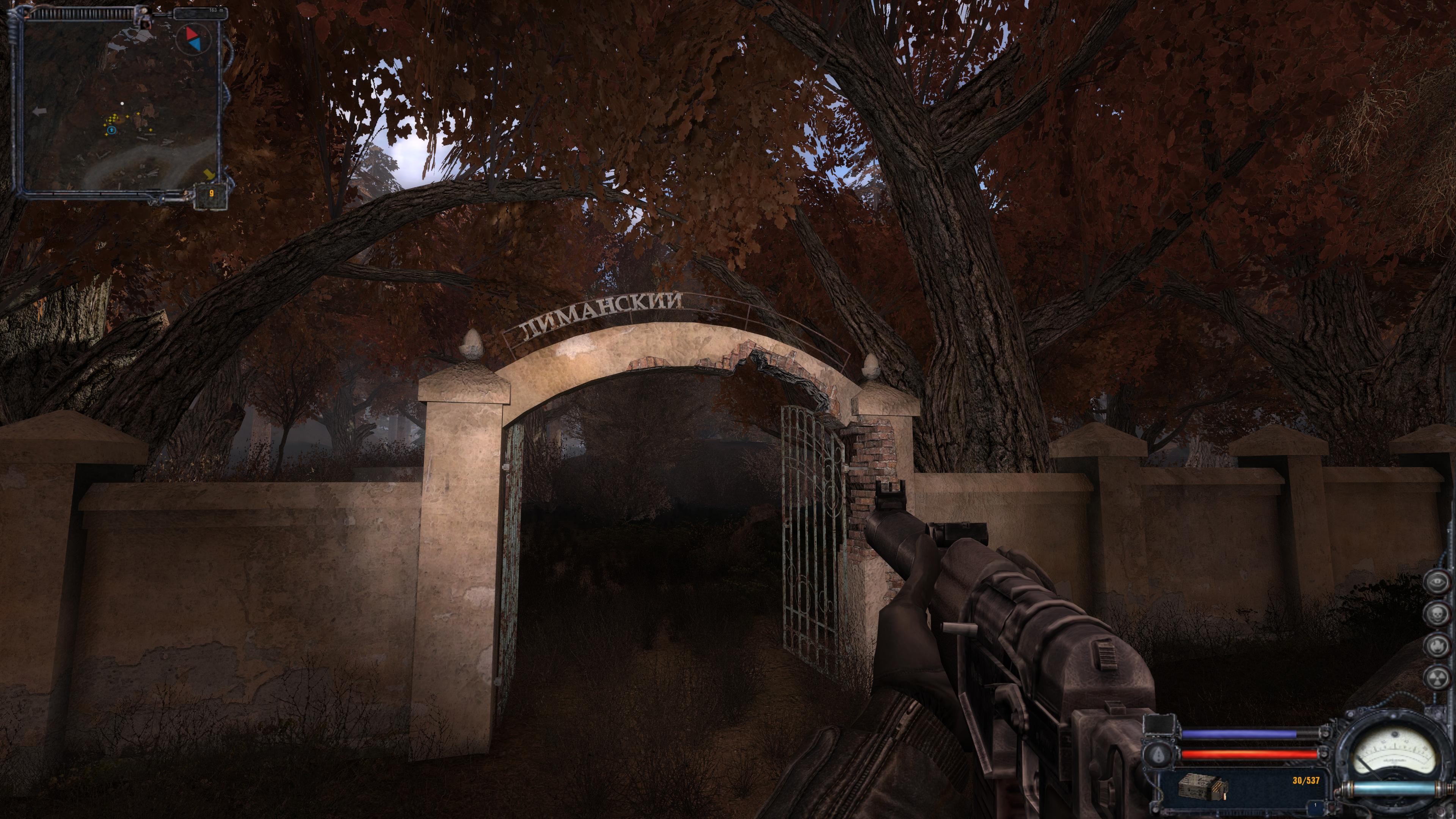
When it comes down to sound design, the game has all of SoC’s soundtracks and guitar tracks. It has a few new ambient tracks but nothing else exciting. Weapon sounds received a revamp, but the biggest change is to the English voice acting. Clear Sky is probably the best voiced of the STALKER titles with many NPCs having unique voices and actors. Some of their accents and dialogue are quite cheesy but it does work well enough to likely be unnoticed by most player. For sure better than Call of Pripyat and even most of Shadow of Chernobyl.
The User Interface design was handled very well yet again. Many games have obscene feature creep or start over-designing their interfaces when making the second game in a series, but thankfully this did not happen here. The new interface has the STALKER aesthetics but looks sleeker and better (subjective) without compromising on features. It is fast and easy to use with very little wasted space. I have seen even better-looking interfaces, and Call of Priyat’s usability is even better, but few modern open-world games actually compete well with STALKER here. What is still missing however is category filters within the inventory, e.g. enabling a Weapons filter to only filter weapons, and the same for armor and healing items.
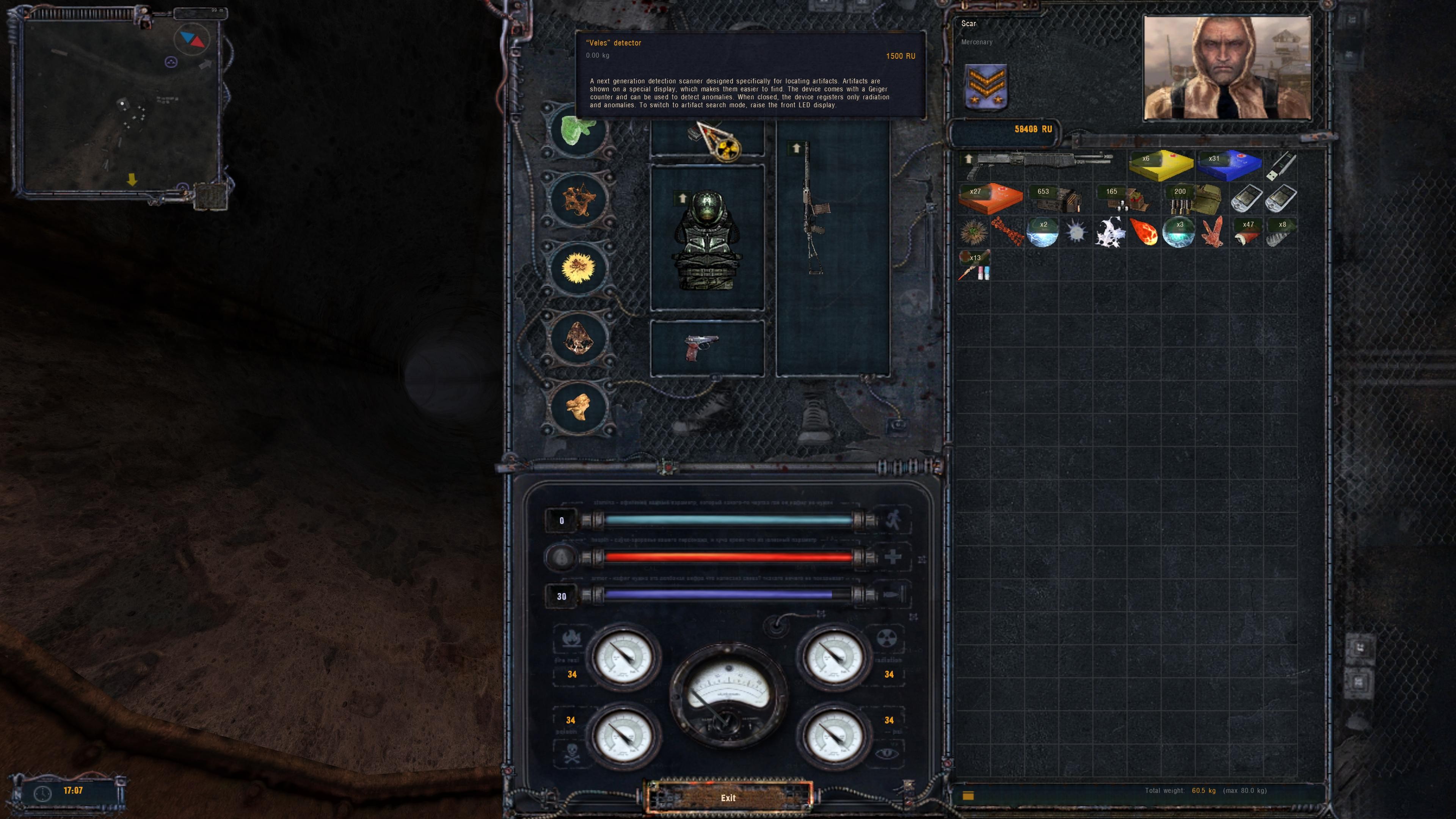
The Personal Data Assistant the player has was redesigned. It still contains a map as well as objective and quest markers. The messages tab is now easier to navigate and a new Factions and Faction Wars tab has been added. Its use in the faction wars is somewhat questionable, but it does give rough estimates of the power of a certain faction. Unfortunately, the neat diary and encyclopedia, as well as ranking pages, were removed. We have no idea why as those were interesting concepts for sure and added to the world-building of the series. With even a simple overhaul and a better writer, they could have returned to impress yet again.
The most damning issue with the game by far was how buggy and unpolished it was. On release, S.TA.L.K.E.R.: Clear Sky was one of the most broken open-world games to ever dare release on PC. It had quests without completion, NPCs leaving position without reason only to get killed in a fight, crashed on certain video cards, had stuttering issues and poor performance. It was not a pretty situation. It received a lot of hate as not only was it not a good release, it was worse than the already problematic Shadow of Chernobyl release and that takes real effort to “accomplish”. It was rightly critiqued for its incredible instability and lack of basic QA polish. It was (ironically) rushed to release yet again, despite GSC’s insistence to the contrary. They also scored some negative points with the CIS community, as the game released a few weeks earlier there and was treated as something of a beta test by the developers, so as to be at least a tad more presentable to the western and eastern audiences.
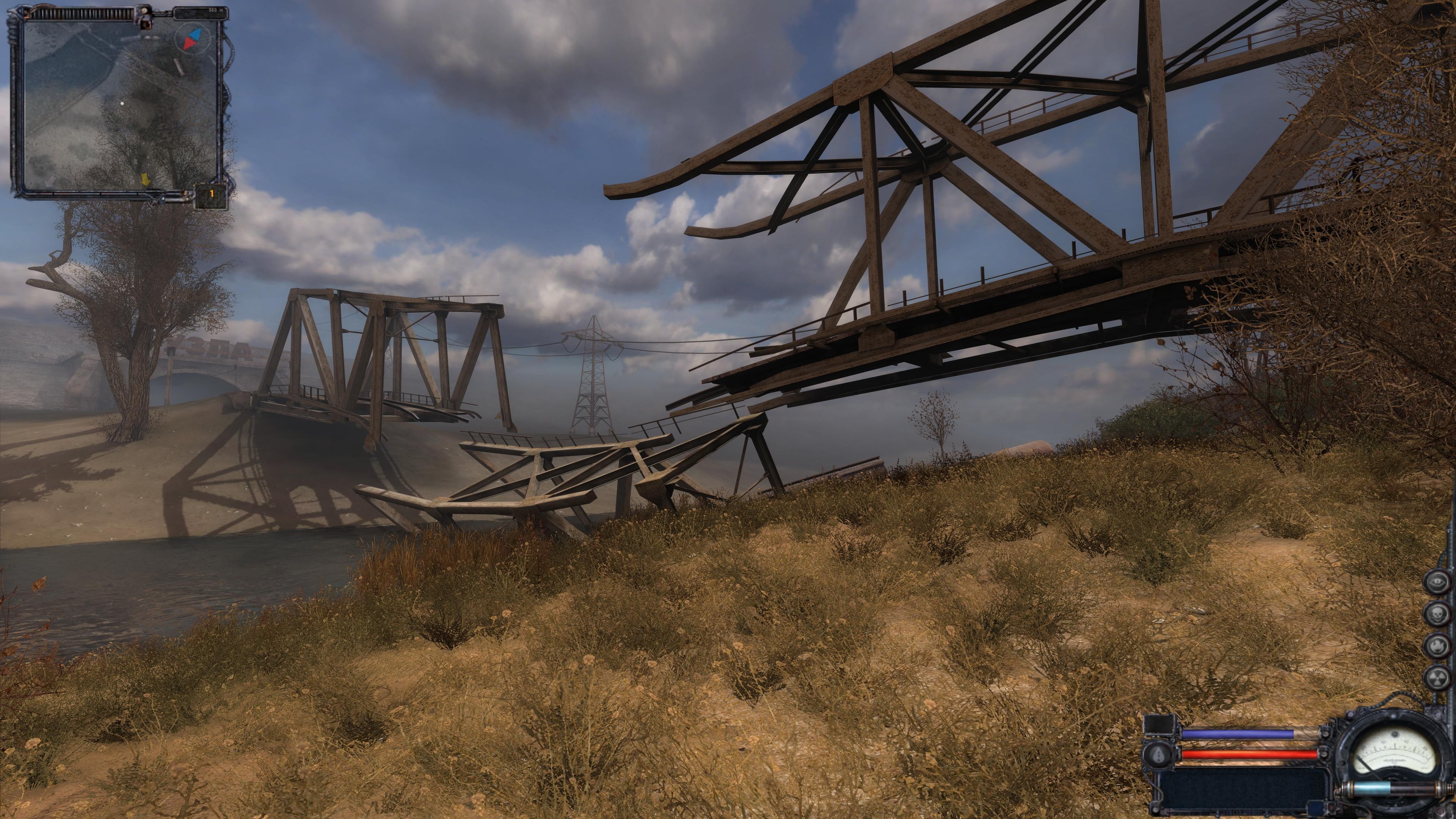
However, GSC didn’t leave their game as-is and released a fair few patches which greatly improved things. Before them, finishing the game was a luck of the draw matter but nowadays it is fairly stable. Still, many issues persisted but the community came to the rescue once again. These days people can use the Sky Reclamation Project (SRP) mod, either as a standalone, with add-ons, or as part of a pack. It is an impressive feat of love and modding despite being just a big bug fix mod. It comes with no changes to most vanilla gameplay loops but does have a few basic optional add-ons which people can mount if they wish. Vanilla purists are still encouraged to try it just patched if they want to, but for most other gamers new to this title that want a stable first try at Clear Sky, it is the best solution. In my honest opinion, playing Clear Sky with SRP and the Alternative Ballistics addon is the best way for new players to experience this title.
If only the game had released in its patched state, or better yet a state equal to the fully patched game plus community fixes. Its reception would have been much better and its reputation as the worst of the series would have been averted.
Storytelling
Creating a prequel is very challenging even at the best of times and GSC Game World had their work cut out for them. Shadow of Chernobyl was very strong in almost all indirect methods of storytelling but had some issues in handling its main quest content. Clear Sky is different as it has neither the highs nor the lows that characterized Shadow of Chernobyl, though the most important secondary world-building is nailed yet again.
Clear Sky takes place under a year before the start of Shadow if Chernobyl, with the younger Zone just recently having gone through a powerful emission (massive waves of fictional Psionic Energy) endangering all the people within the Zone. With many units annihilated or trapped, old paths lost to anomaly fields, new paths becoming apparent for daring explorers, and a forgotten faction resurfacing, tension is high throughout the Zone. It is at this point, the start of the fated faction wars that the player (Mercenary Scar) has to somehow find and stop the legendary figure that is Strelok, a master stalker, and his companions from reaching the center of the Zone.
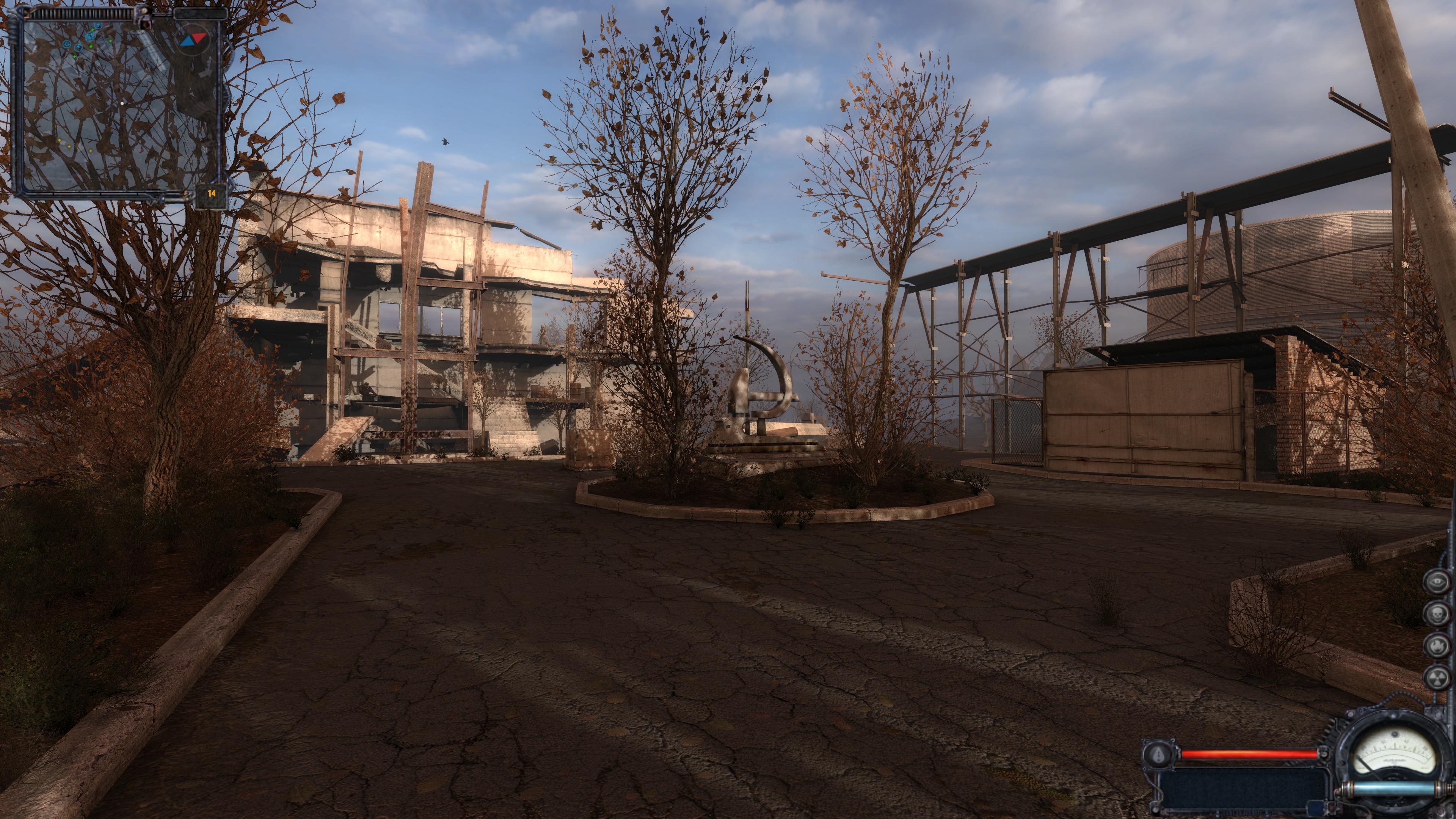
There is a greater sense of urgency with Clear Sky than SoC. Scar’s main motivation is not so much to unearth some dark truth or to find someone to understand his past, but it is rather a question of life and death, survival. The Zone feels threatened by Strelok’s incursions and as such is steadily becoming more and more dangerous, with its emissions becoming growing in power, something that threatens every single human being within the Zone and even those close to its border. If Scar does not catch Strelok, then sooner or later he will die, and not from a bullet, anomaly nor a mutant’s bite, but his own nervous system will give up on him, even if he somehow survives the monstrous blowouts it will unleash. It makes some sense in-universe, as explained by Clear Sky’s chief scientist, so we will just roll with it.
The main questline once again takes players through all major locations of the game. Unfortunately, while the characters are better voiced this time and some of the situations are pretty interesting and unique for the series, from my personal point of view it is overall weaker than Shadow of Chernoby’s main line. GSC has made a more coherent plot this time around and it is much more likely for most players to understand it, which is good, but some of the more interesting science fiction themes had to go, which is a shame. There is a way to have your cake and eat it too, even when it comes down to storytelling. Alas, Clear Sky is not on that level and while logical, none of its situations or events are particularly inventive or unique.

I would not be surprised if many players overall prefer Clear Sky’s more focused approach to storytelling, but while certain elements are an outright improvement over the previous title, others are lacking. The sense of urgency does not play to STALKER’s strengths as a game series, or at the very least not to Clear Sky’s. While there is a lot more development and nuance to some of the game’s characters, it is not even close to approaching what other FPS titles, let alone RPGs have accomplished within the genre. It also seems that yet again the Zone is the greatest and most developed asset of the game, which is not a bad thing. It is just so frustrating to see the developers nail things others cannot and then fail at things that should theoretically be child’s play for them.
The Zone in Clear Sky is viewed less through the nameless protagonist’s eyes and more through the prism of the other factions and people of the Zone. Some see it almost like how certain island tribes view the nearby dormant volcano — a being of immense power that is not to be trifled with. Being the second game in the series, this does end up being refreshing as it allows experienced players to feel a familiar place through a biased perspective, a trick more sequels should try to use.
I also appreciated the slight detail with Scar’s predicament. He is an older man, at least compared to most of the people in the Zone, and is no longer in his prime. The Zone’s energies are slowly killing him, but at least make him perform physically on a very high level, no worse than the younger Special Forces operator from Call of Pripyat or Shadow of Chernobyl’s Marked One. He also does not seem to need food to survive (unsure if I like this mechanic) and is slightly harder to kill than other humans. It is a slight difference though and you never will feel actually superhuman compared to other people in the Zone.
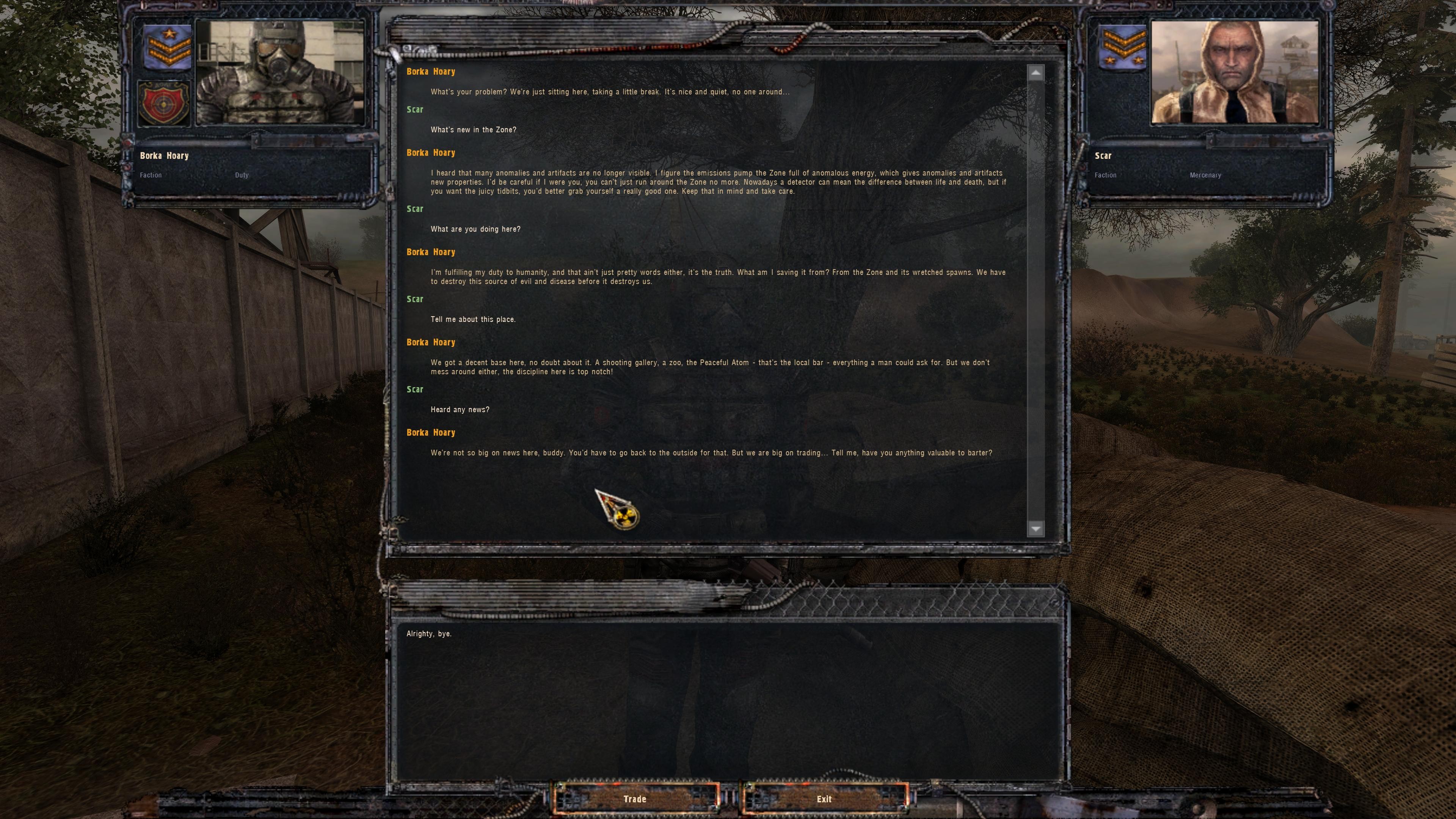
The political situation within the Zone has received a lot more attention this time around. As GSC themselves admit, factions were described generally well in Shadow of Chernobyl, but their method of fighting, rank and file members, as well as ideology, were not very well developed. This is mostly fixed with Clear Sky with all factions being rebalanced and having expanded inventories, new armors and weapons, as well as more thought out bases and living quarters, to make them feel more real. While ultimately I think that some of the load-out choices are too gamey and even more could be done for in-game balance, as it stands, Clear Sky is still very good by any game’s standards on this topic.
We also get to actually talk to more members of some previously always hostile factions. A few military members can be spoken to during quests, the player will be able to communicate with the still quite evil, but not nearly so trigger-happy bandit faction. You can even join them if you do their side-quests! Even the mercenaries finally get to have a few real characters, no longer elite mooks to be mowed down by the player en masse. I believe the game needs a lot more of this, but this is already a huge step up from Shadow of Chernobyl and massively improves the series lore and world-building.
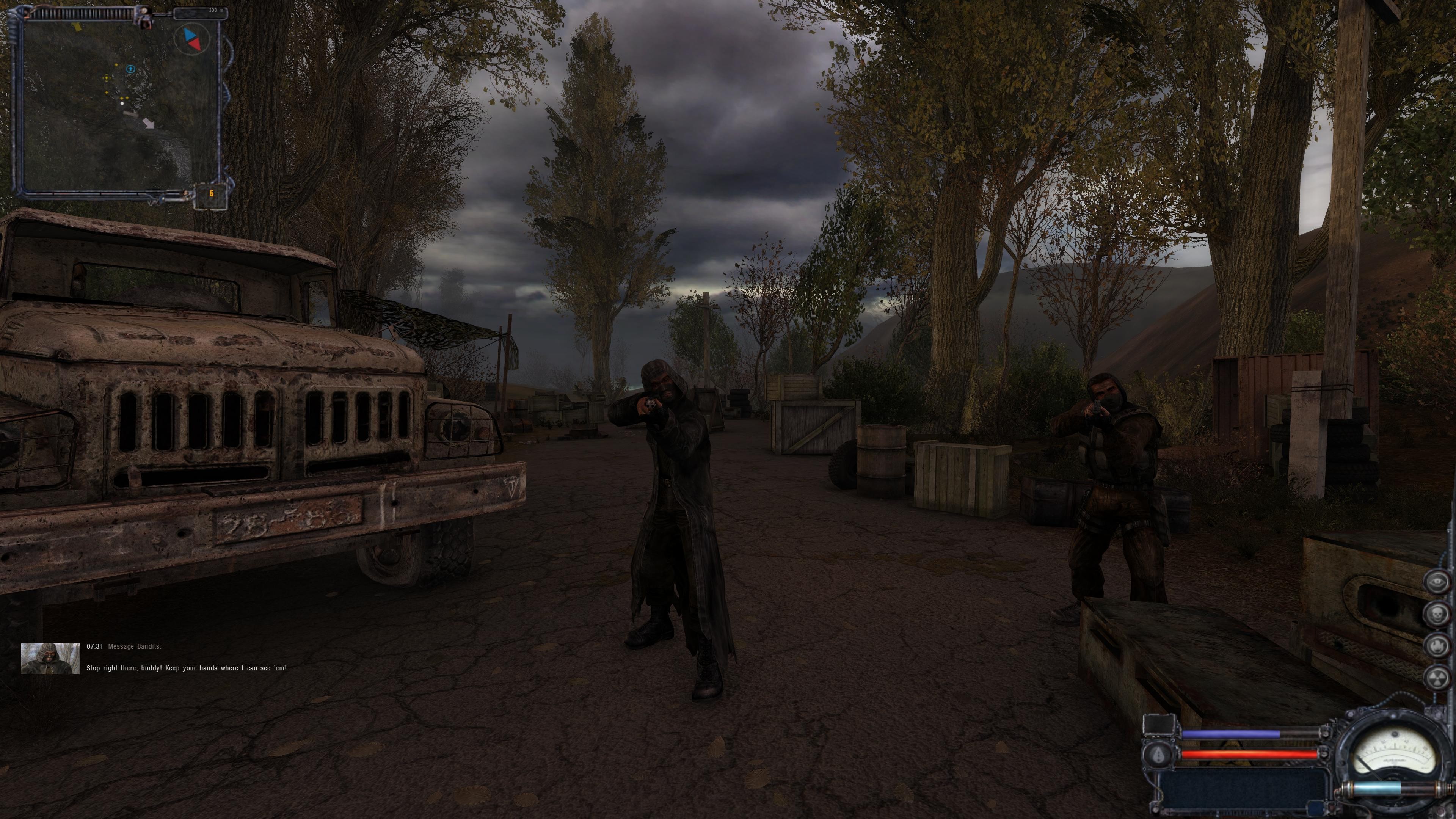
A huge improvement over the original game is the dialogue system, especially when pertaining to background NPCs. Now you can actually have a semi-decent conversation with most characters in the Zone, asking more than one question. Make no mistake, we would love to see even more, but this change alone puts it in another league when compared to the original and all other open-world FPS titles (that are not Fallout 4 or STALKER mods).
Overall, Clear Sky is a reasonable showing in terms of storytelling. Its plot is easier to understand and delivered a tad more gracefully to the player, but is also somewhat lacking in thematic focus and impact. We at GND-Tech do feel that while OK, it is inferior to what Shadow of Chernobyl offered. With that being said, the view into factions, the better established (still not great) human characters, the more thought out NPC dialogue and the near ironclad view of the game’s world and lore do earn points with us. Clear Sky may not be overall better than Shadow of Chernobyl here, but it is still a reasonable showing. If only the developers did not cut the encyclopedia we would have even given it a win in secondary storytelling aspects.
Gameplay
As a second game in the series, Clear Sky takes after Shadow of Chernobyl heavily but GSC Game World did introduce many changes to its core gameplay.
Probably the biggest singular change was made to the anomalies and artifacts as well as their mechanics. The game now has an artifact detector which has to be equipped in the inventory and brought up to be used as a real device, in-game. There are 3 tiers of detectors and they can be bought from traders, found within the game world or received as awards for completing missions or joining certain factions. Once the detector is deployed the player can only use bolts, a pistol, or a knife alongside it and must start navigating anomalies to find artifacts. Your trusty bolts make a reappearance and are now even more useful than before. Almost all artifacts are no longer visible to the naked eye and can only be located with the aforementioned detectors.
Overall, hunting for artifacts is now much more involved than before and much harder. The only issues with the new system are that now there are fewer anomalies all around, with the vast majority being concentrated into “anomaly fields” and artifacts now have less interesting pros and cons. Gone are the cool bullet and mutant protection artifacts and now all negatives seem to just be boring old radiation damage. This is definitely a step back from Shadow of Chernobyl’s far more varied, more RPG-like Artifact properties and I am not certain why GSC enacted this change.
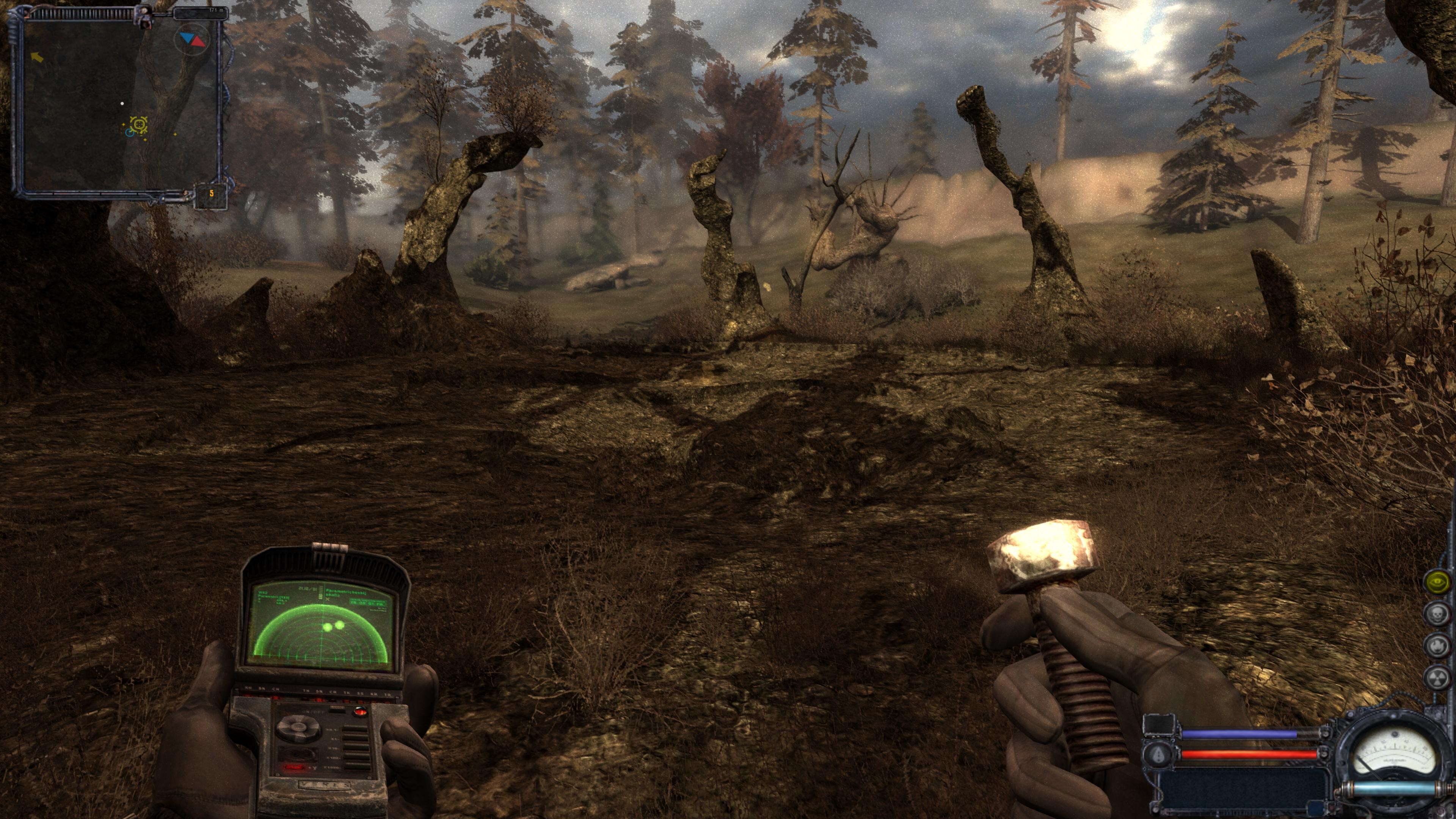
Clear Sky has a few more weapons than SoC namely the Browning Hi-Power (could be found in SoC’s files), official introduction for the Beretta (one is in SoC due to oversight, with incorrect stats), TOZ-34, and PKM, which is the first and only machine gun in the game series, baring mods. The added variety is not much but it does make the game feel more complete and well thought out.
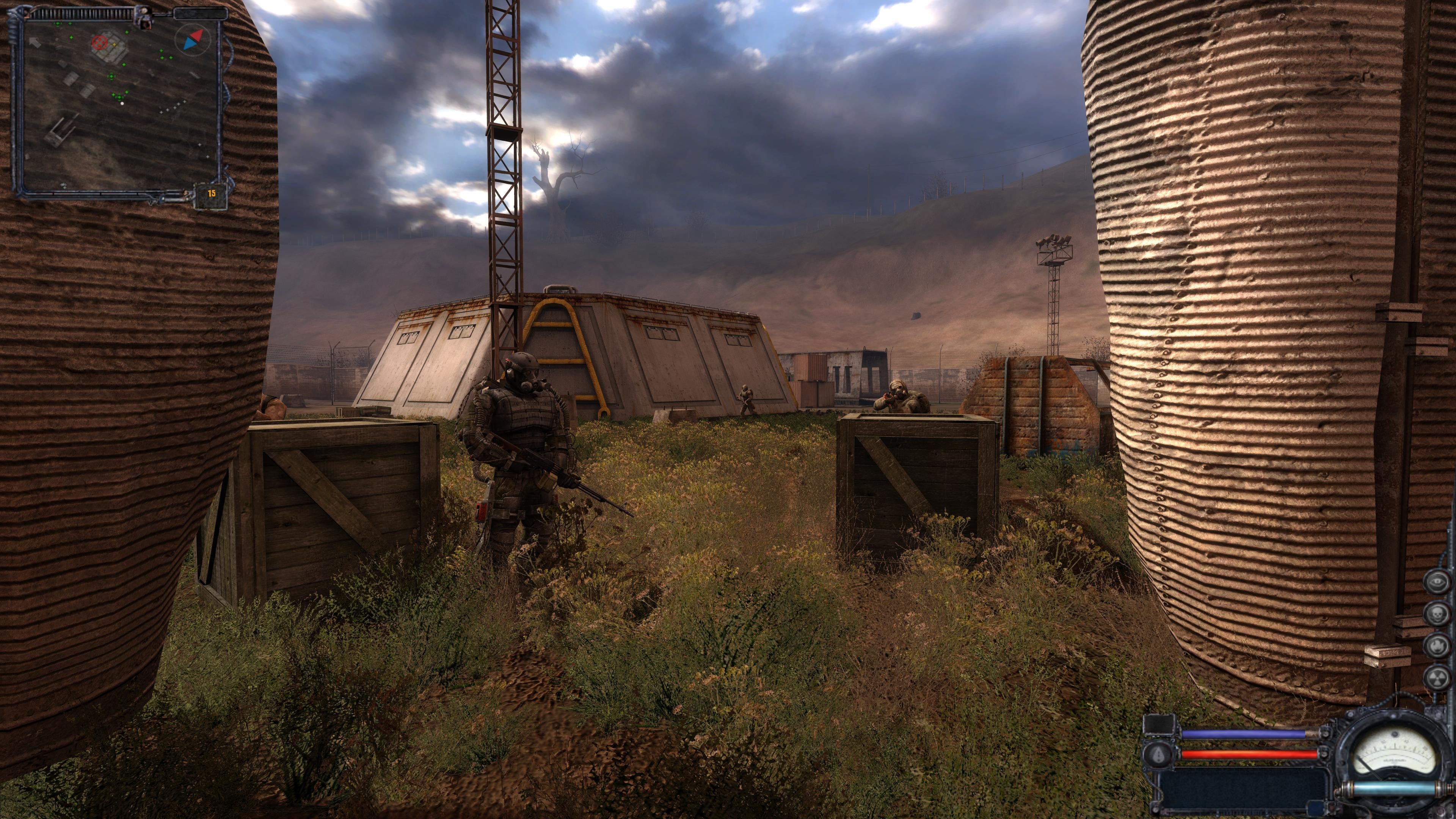
Shooting mechanics got a complete overhaul as well. Animations are much improved and the weapon ladder system for Shadow of Chernobyl was mostly decomissioned for Clear Sky. Early game weapons are now somewhat competitive with late-game ones. No longer are the AKS-74 and AN-94 Abakan sub-par, but are now actually competent and decent weapons, more than capable of competing with most NATO 5.56 class firearms. The balance still needs work but it is much better than in the original. The general ballistics calculations are also deeper than in SoC and can rival some military simulators in terms of capability. The Prequel also has a more pronounced penetration system than in SoC, with many more objects being penetrable and having a more realistic round behavior after hitting an object or ricocheting. With that being said Clear Sky has its own issues brought to the table – questionable ammunition changes and incredibly spongy human enemies. The 12-gauge Slug and Dart rounds, which were fairly good in the first game are now near jokes, incapable of hunting mutants nor killing armed humans. SP-5 was removed from 9×39, which was a shame as it had medium penetration but superior accuracy to SP-6, giving more player choice and depth to some weapons. The few mounted PKMs that appear in the game can be operated only by NPCs and for some reason deal insane damage, far more than the already deadly PKM machine gun. The damage and resistance values for NPCs, especially human NPCs and Zombies are completely out of whack though. I have no idea what GSC game world was thinking here, but the time to kill is way too high on most enemies. Players effectively always have to aim for headshots as even somewhat lightly armored opposition can magically survive 5.45 AP or even SVD Dragunov rounds to the chest. The standard weapon accuracy for almost all guns in the game is completely illogical, there are airsoft guns with better accuracy. I get that some scaling is in order for the smaller video game levels, but the way it is handled in-game is nothing short of preposterous. If this weren’t enough, the developers gave NPCs invulnerability frames during certain animations. This frankly idiotic decision means that it is possible for the player to empty three full shots with a SPAS-12 at point-blank range unto an unarmored bandit and have the human survive. We can understand this happening for class IV or IV+ powered armor like the Exoskeleton or some abyssal monstrosity from the deepest crevices of the Zone, but not for a normal, rookie bandit without armor.
It is not a hard problem to solve as a modder, but it is incredibly frustrating to have leather jacket bandits survive punishment that would go through class II armor with ease. Finally, a bizarre but otherwise minor issue is the removal of pistol iron sights. Instead, Clear Sky uses a simple Zoom feature some other, less realistic shooters use. It works good in some arcade action games but not in Clear Sky. Thankfully it can easily be changed back to iron sights.
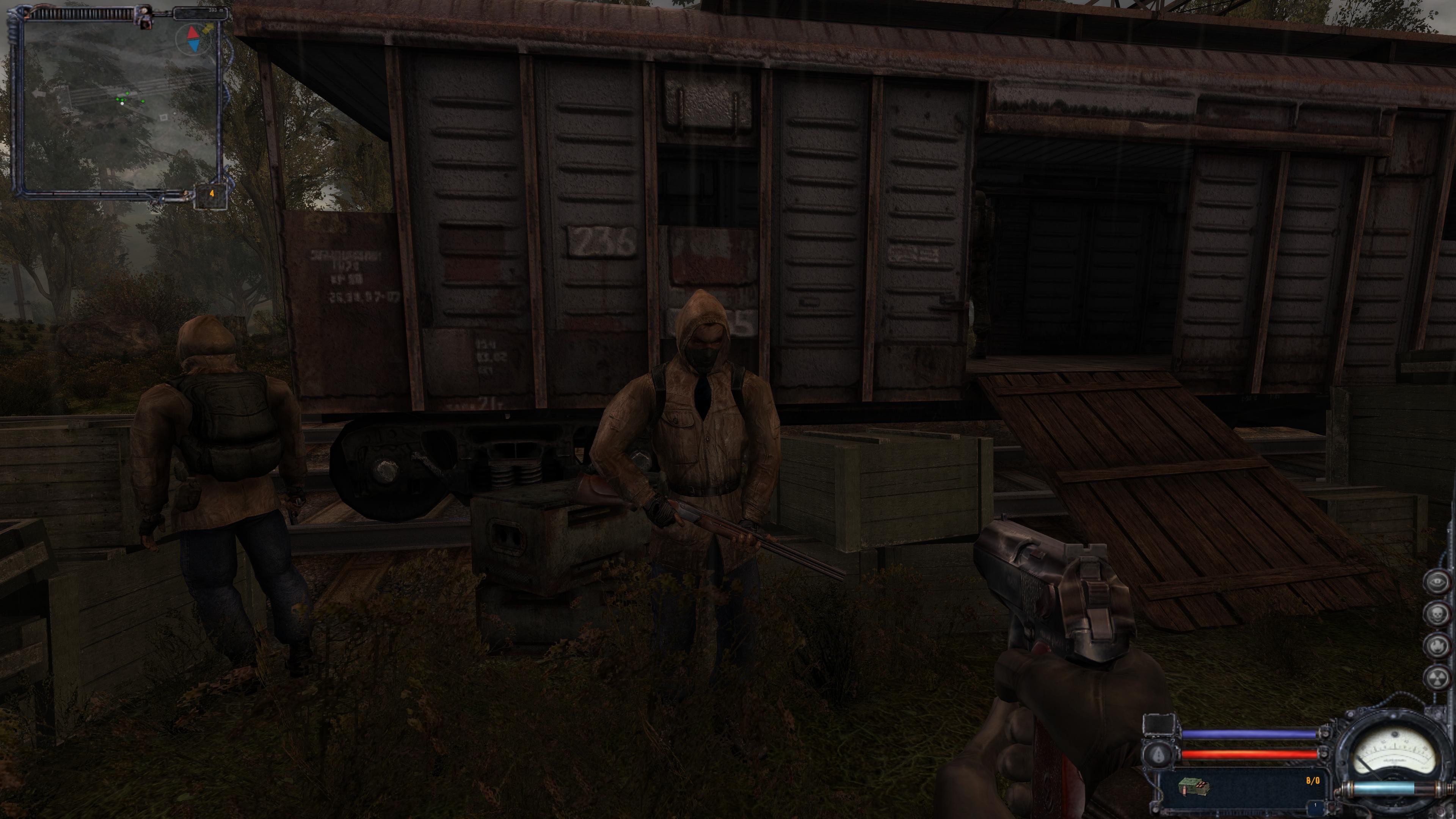
Another new feature that was cut from the original is equipment upgrades. Clear Sky offers a few branching choices for upgrades for both weapons and armor. One can take a good anti-anomaly suit like the SEVA and upgrade it into a very decent combat armor. Things such as changing calibers of guns or increasing their rate of fire or accuracy are standard. Many upgrades also have downsides. Making an AK into a pseudo sniper rifle is very cool, but it will lower its rate of fair. Not all calibers are good upgrades. Certain upgrades may preclude you from using certain ammunition types, armors start weighing more and more etc. Overall for a first-time implementation, it is a pretty solid system, but many mods do an overall better job than Clear Sky here.
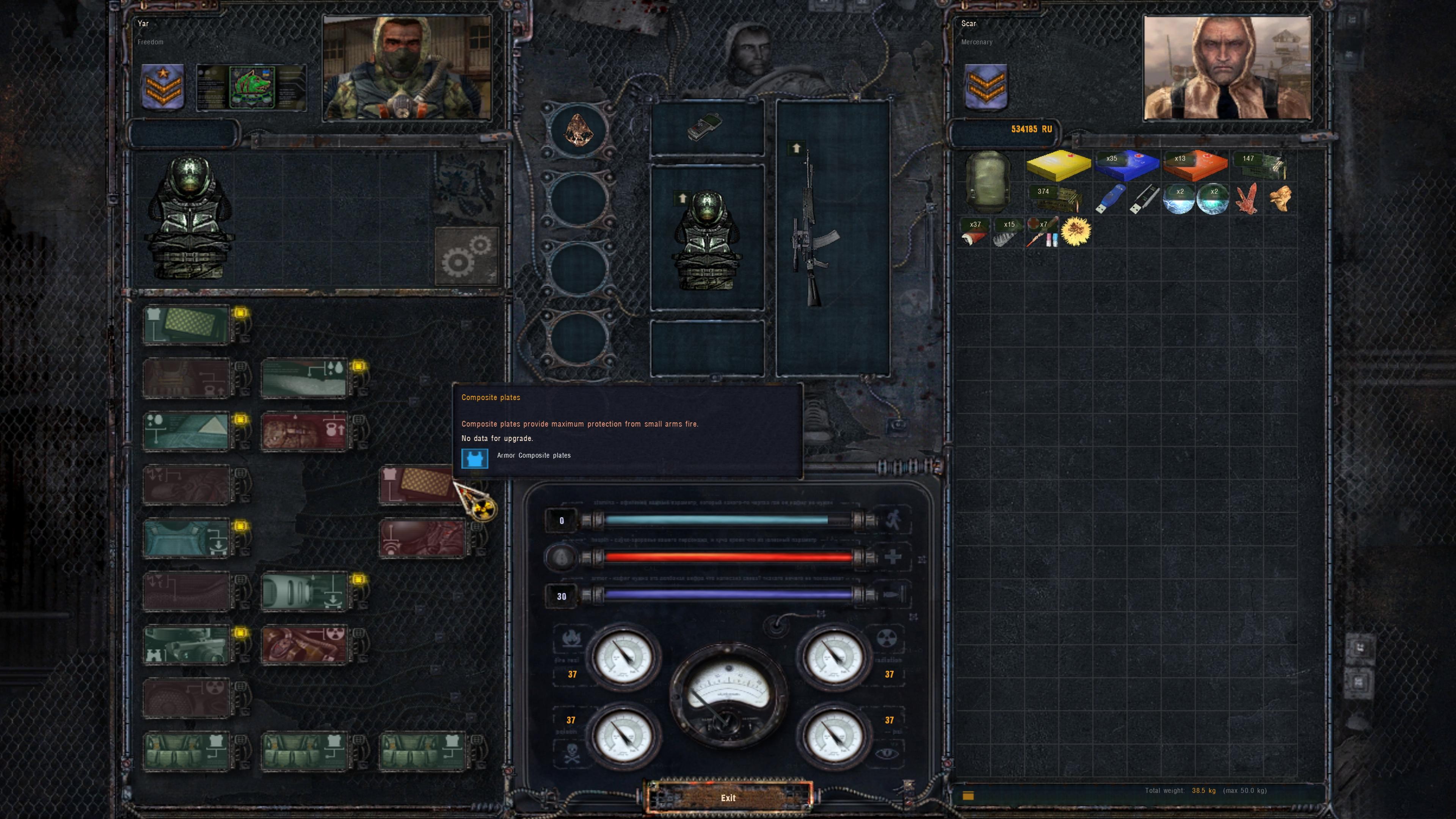
The game’s AI has received numerous feature updates and overhauls. The core logic remains the same Goal Oriented Action Planning (GOAP) system as before, but it has numerous improvements and additions on top. Grenades were for some weird reason omitted from the AI’s programming in SoC (despite the code being ready and working) but Clear Sky activates this feature for human AI. Unfortunately, the accuracy of the stalkers with grenades is superhuman and does not make sense. While mods mostly address this silly issue, the fact remains that GSC made an outright stupid mistake somewhere in the code. The other major new addition is the inclusion of a “Smart Cover” system which allows NPCs to use the environment to greater effect during combat. Humans can now blindfire, vaunt over obstacles, use complex terrain for cover more efficiently and the like.
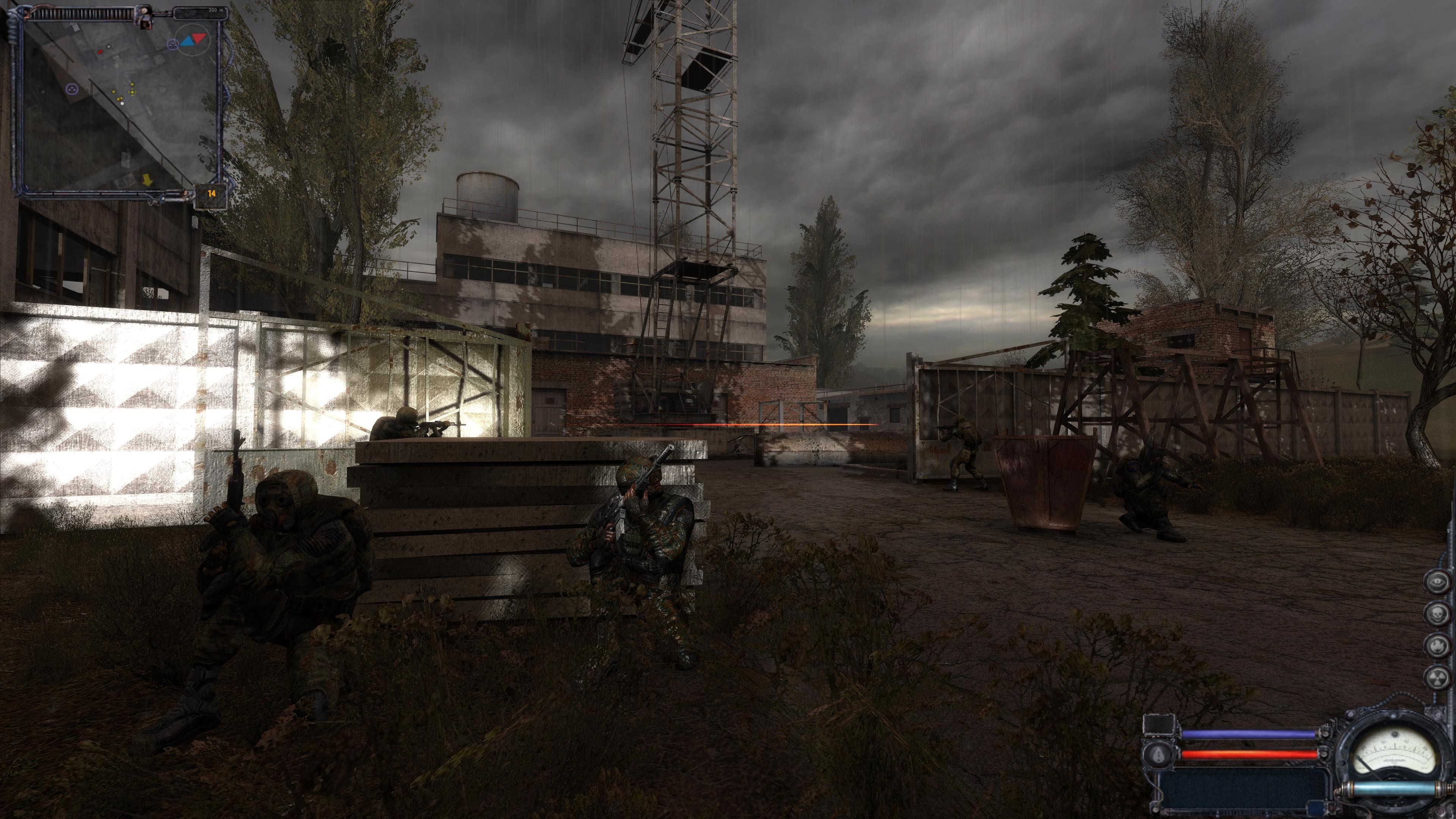
The mutant animals also received an update. A few of them got new models and textures, but far more importantly their AI and abilities and general AI got revamped. The work on the animation system alongside better collision detection was in itself a noticeable upgrade for some of the mobile mutants, but the addition of special abilities like jumping or charging forward helped even more, especially for the dogs and boars. With that said, I do have some issues with the mutant roster. Some mutants such as the Tushkanos make only one appearance in the game and it is a scripted sequence. Incredible underutilization of a decent mutant. No new mutants make an appearance and only a scant few Controllers and Pseudogiants exist in the whole game, again in scripted sequences and side quests.
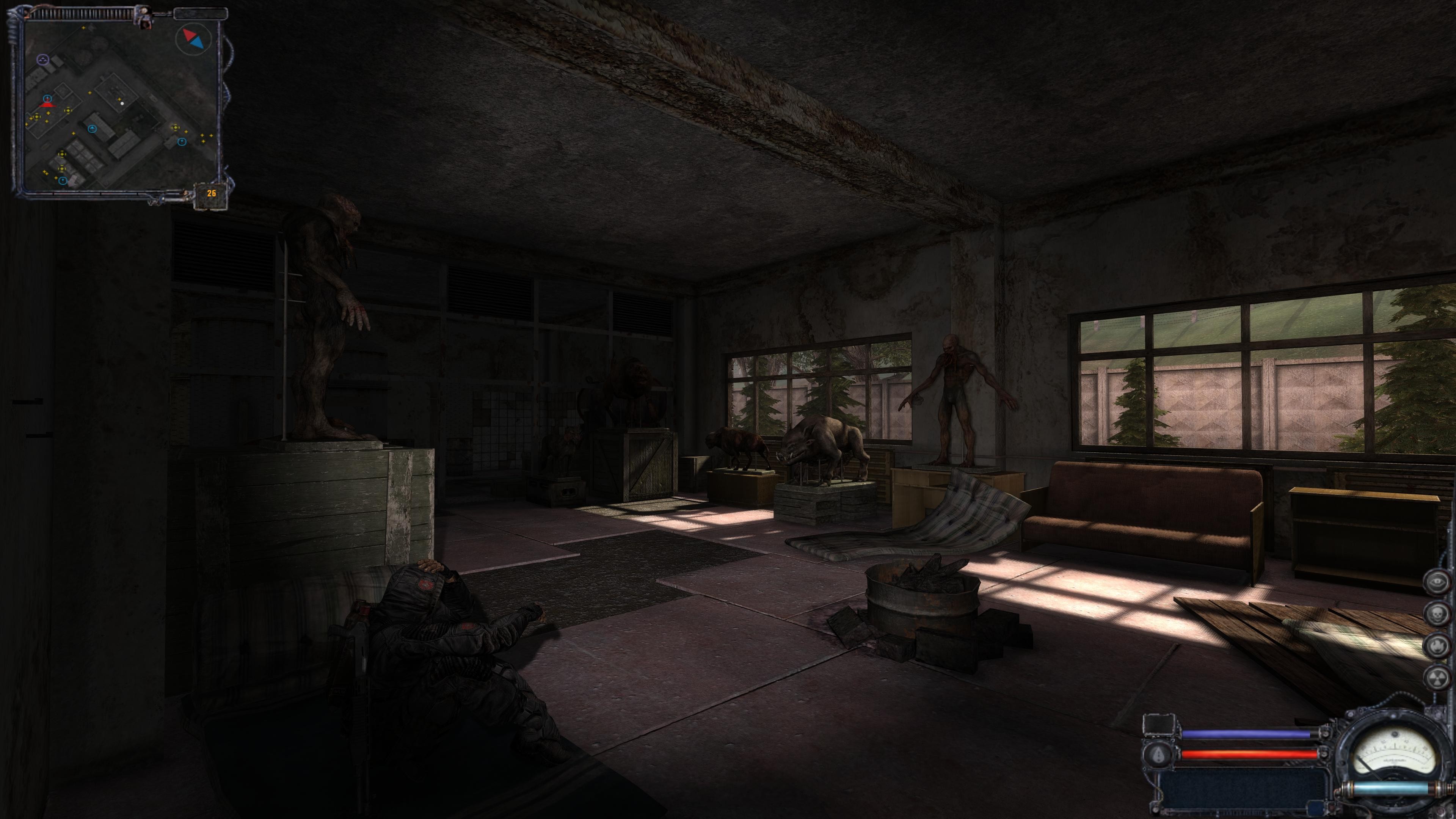
Some mutants are also given certain special powers. GSC realized that humans have a large advantage with their firepower, so they looked into making the monsters stand a better chance to close in the distance against their armed adversaries. Not a bad idea all things considered, but it does lead to some questionable decisions. For example, Bloodsuckers are invulnerable to firearms while in stealth mode. This is cool, but it means players will just funnel them and unload a shotgun at point-blank range, killing the mutant instantly. It also makes no sense as if the creature has such power once invisible, why does it not stay like that as it engages its enemies?
Lastly, for some reason, mutant parts are no longer lootable. The parts are deleted from all mutants and there is no reason to search monsters after you killed them. While this was in itself a somewhat underutilized mechanic in the original game, if anything it deserved a rework to be more in-depth or interesting, not outright removed.
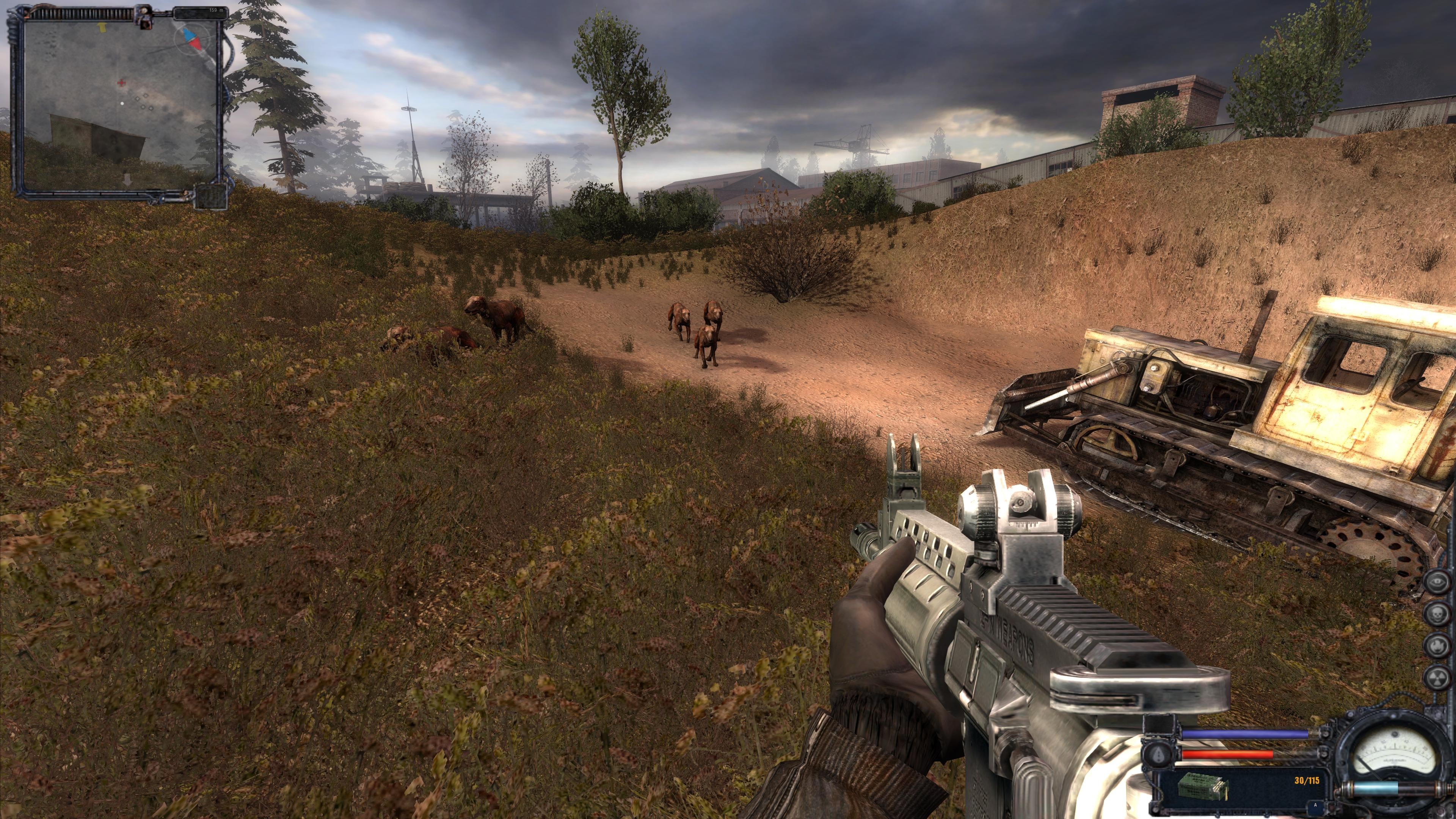
The Faction War system is a new A-Life driven mechanic integrated into the game world, meant to add replay-ability. From the player’s perspective, factions are now autonomous powerhouses with a dynamic presence in the Zone. Now, Stalkers are treated as resources under the direct control of global AI commanders that try to complete certain objectives on the global map. Almost all factions in the game are subject to this (except for the Military and Mercenaries, who are scripted factions, unfortunately) control and will dynamically fight for locations around the map. While they do try to complete major objectives such as, for example, Duty will try to take control of the Garbage territory, they also have secondary expansionist goals that while not stated outright by its commander are still followed through by its soldiers and are logical. In our aforementioned example with Duty it is getting to the Army Warehouse’s Barrier location and defending it from Freedom and Monolith soldiers.

The Faction War system is fairly unique with FPS games and it is also quite an interesting system. When it works well it is truly a sight to behold, with squads of armed stalkers fighting for objectives around the map and mutants storming lone encampments and disrupting human routes. It is a very fun time, but there is a major problem — the actual war often grinds to a halt on its own. The Sky Reclamation Mod does do a good job fixing these issues to a large degree, but even it cannot address all instances of a lost squad or a slow to react AI commander.
Other issues with the system are deeper though. Clear Sky, just like SoC, relies on relatively large maps connected to one another to form its open world. From the player’s perspective, this is not a big deal, but it does mean that maps have a limited amount of entry points and those same points are bottlenecks. This hampers the AI’s movement and strategy, especially when they have to break through an enemy camp in order to proceed. By itself this would actually be great if it was something that was used sparingly within the maps, but alas almost every single entry and exit point on all the maps has such bottlenecks. Another major issue is the size of the maps themselves. They are not small by traditional video game standards, but in the context of the faction wars, they make it seem predictable at times.
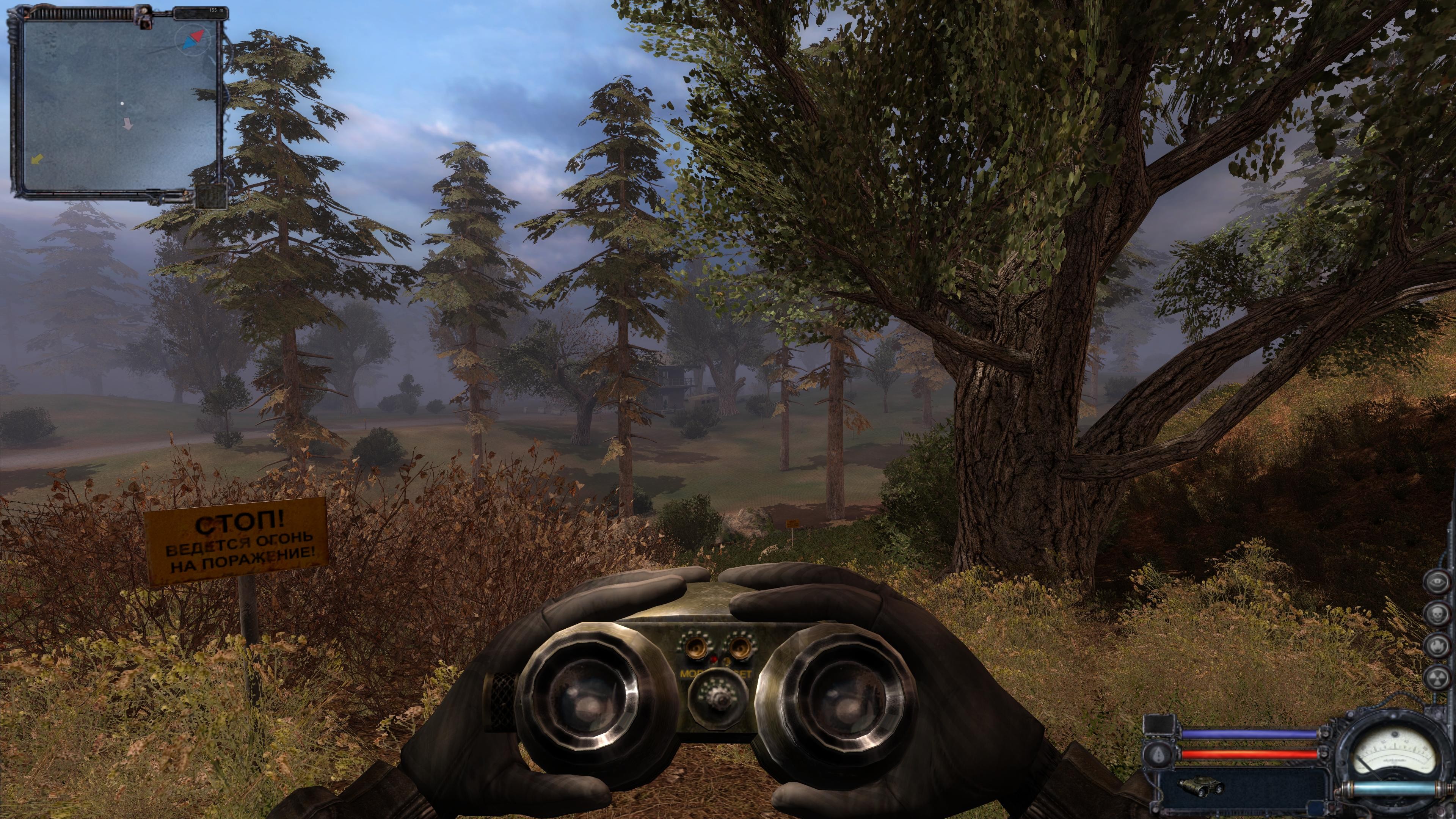
Simply increasing map sizes would not have fixed this issue though as NPC travel times from their base/respawn point to the front-line would have taken even longer. In reality, the only reasonable way GSC could have solved this issue was with a continuous, open map like in modern video games, but alas their engine was limiting them at the time. Still, even with this issue we have to say that we appreciate the Faction Wars system, because when it works it is a lot of fun and it would have been better if more games took such gameplay risks, especially these days. The Faction Wars now exist and work better in mods, so their legacy will not be forgotten.
Something else that was a welcome addition, linked to factions are the new, more functional bases. Almost all major camps or bases now have designated guards, traders, barmen, commanders. Not only does this make the factions and people seem more real, not only does it help with world-building and storytelling, but it is also functionally a decent upgrade over the previous title where main camps were a tad dull in their functionality. Alas, the option to sleep is still missing from Clear Sky.
Emissions were officially re-introduced in Clear Sky. They were a feature that was almost fully functioning and cut from Shadow of Chernobyl for unknown reasons, but now they are back. Unfortunately, their modus operandi in the game is quite underwhelming. Every time you go back to a previously explored area there is a chance of an emission starting and making the player run for cover. The thing is, other NPCs and monsters mostly despawn during this time, so not only is it a tad immersion breaking, but it is also boring to be forced into cover, knowing that you won’t have to fight an opposing force for it.
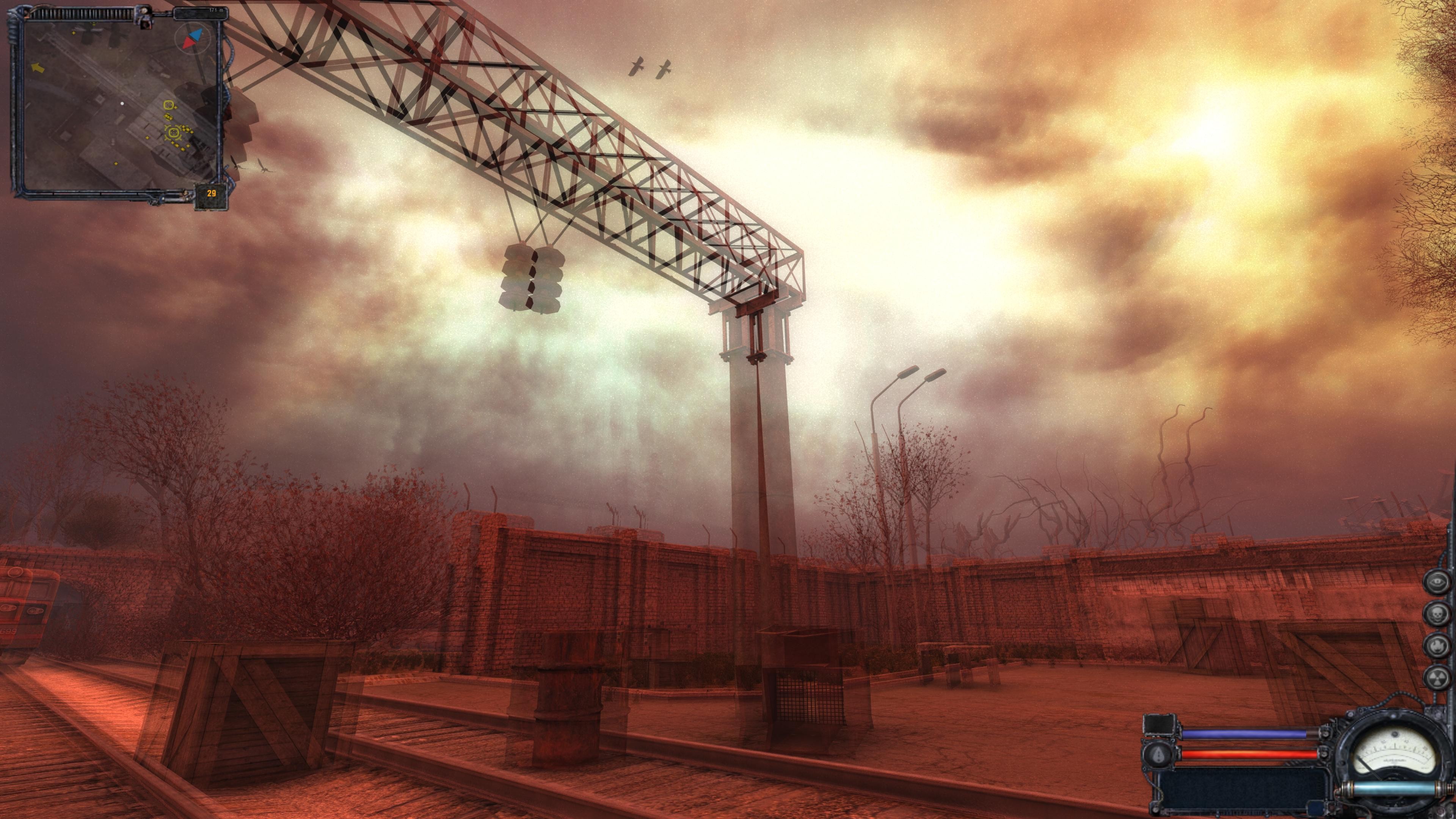
Fast travel also saw its first official introduction within the series. Players can ask neutral or friendly NPCs in certain locations to “guide” them to another camp owned by the same or a friendly/neutral faction. The price is very reasonable for traveling within the same map, but Clear Sky’s maps are not usually large enough to need it. The problem is that traveling from map to map dramatically increases costs. It is ultimately of limited utility to players due to that fact and I would have rather seen prices be more reasonable especially if players are allied with the factions whose guides they are using. It is somewhat cool though, that an added bonus of aiding your faction’s control over the Zone is that you get a faster and easier method of transportation.
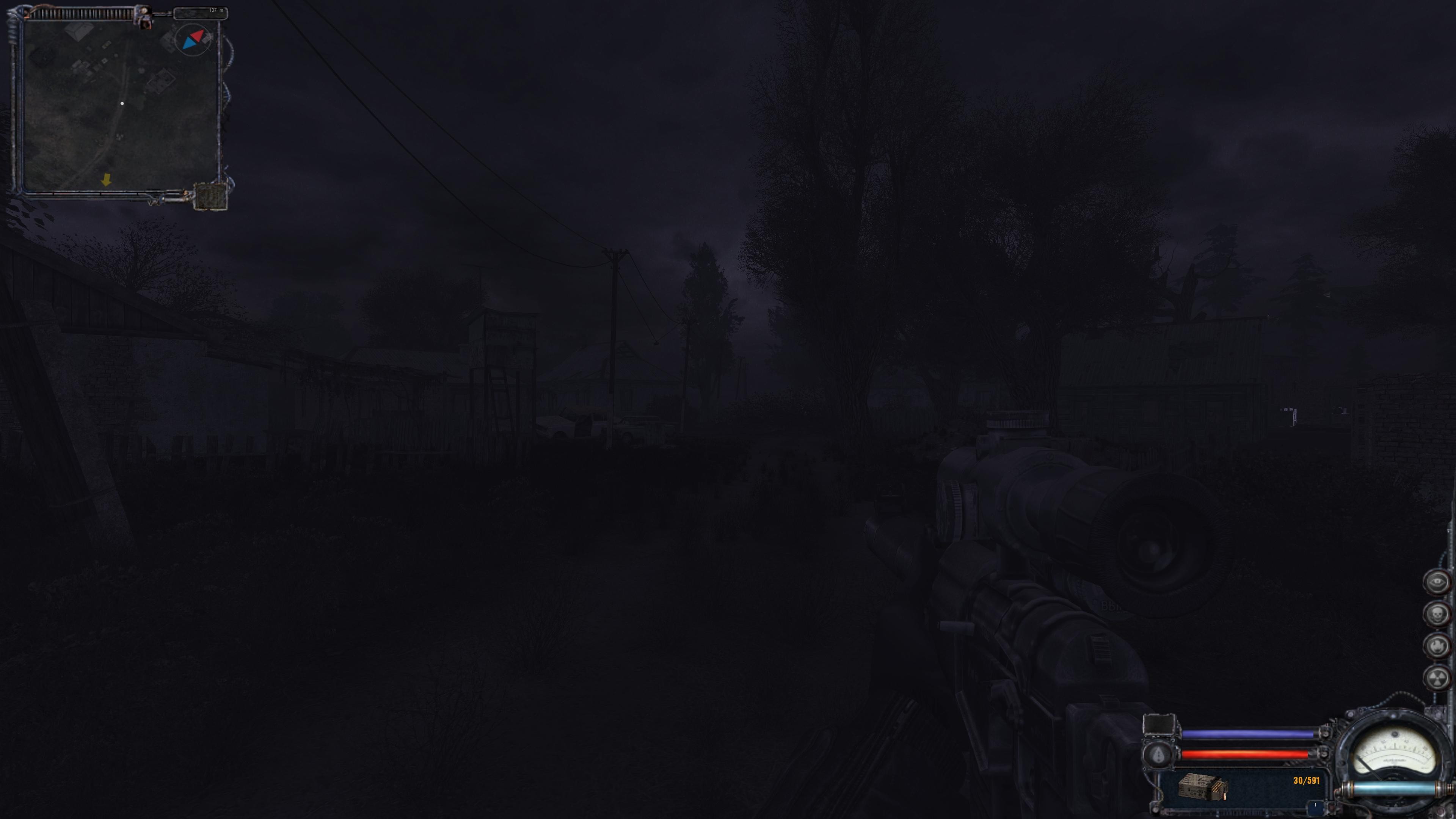
Overall we believe that Clear Sky is a tier above Shadow of Chernobyl in terms of gameplay, but only just. Were it to be less buggy and have better balanced time to kill, it would have left us even more pleased. The reworked Artifact hunt mechanics and upgrade system were excellent inclusions for the game, and the Faction Wars, while imperfect, still do help the world feel more alive than before. It is this technology that can be seen in many of the finest STALKER mods later on and it has proven itself to be an awesome addition for these types of games.
Lasting Appeal
Faction Wars, when they are working correctly that is, add a lot of extra replayability. A player may want to roleplay as a Duty, Freedom, Stalker or Bandit member. Going for a pure “Loner” is also viable. The Zone itself is in many ways even more alive than the one in Shadow of Chernobyl and Call of Pripyat due to the wars and the commander AI vying for control over a multitude of points on the maps.

Alas, a lot of this new assortment of states and events to the already legendary STALKER A-Life is to some extent muted because the prequel has less secondary quests. This doesn’t make it a short game, though. In my estimates most people can expect 20 solid hours with completionists going to 30-35 hours, making for a very long FPS title. Once you add the replay value and modding it becomes truly gigantic.
Clear Sky has an improved multiplayer mode and it still has some players (though most are on Call of Pripyat). However once again it is the modding community that adds value for its single-player that is the real star of the show.
The game itself has fewer mods than SoC and CoP, but while the number may seem low by S.T.A.L.K.E.R. standards, it’s still a LOT of mods. Alas, most modders rightfully preferred to keep on working on the CoP or SoC engines over Clear Sky. A smart decision in all honesty, taken because of their better stability. Still, not many games can compete with this series in terms of fan-made content. From a few long and ambitious story mods to the impressive and fun Faction War mods, the game will not disappoint here. Add to it the great replay value and good length and Clear Sky deserves an excellent score here!
Conclusion
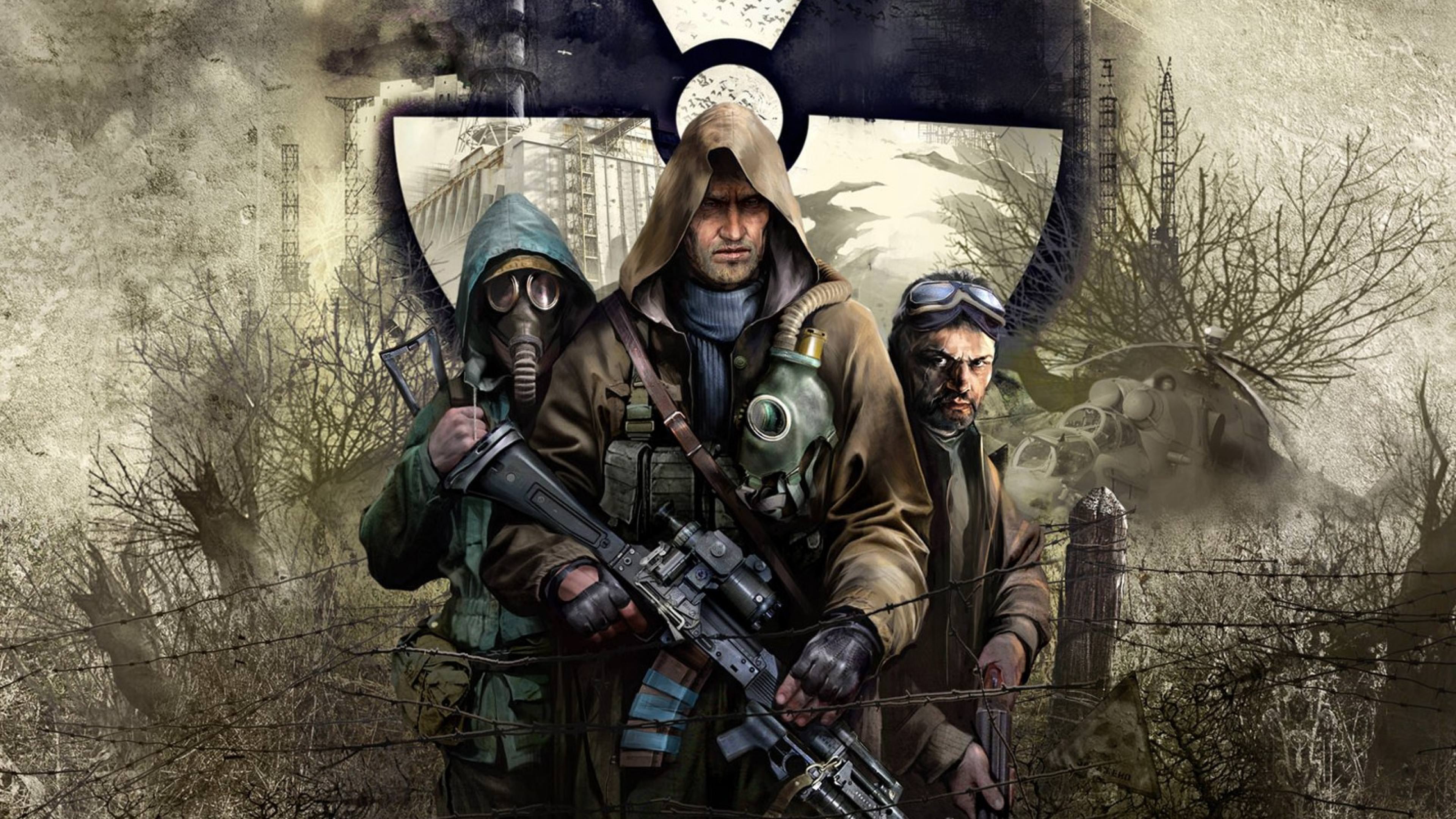
Writing a conclusion for Clear Sky is no easy task. The Game has many flaws and quirks that betray how undercooked it was. It’s silly balancing issues and bugs alone can drive any fan mad, and it did deserve all the hate it received upon release. It was a terrible launch and GSC, in all honesty, needed more time to work on the title. Doubly-interesting is that the original documents for Clear Sky called for an even more ambitious title, with more levels and content and a lot more features than what we got. I have no idea how GSC believed they could deliver such a best in less than 2 years since shipping Shadow of Chernobyl.
With that said, what we can experience now, in 2019 with all the patches and/or SRP is actually a fine game. It is not quite as ambitious with its storytelling as the original, but it is still decent. The world-building is quite good, the gameplay with the latest version of the aforementioned mod is very solid. There is a lot of content to experience and an intensely atmospheric and beautiful world to experience once one jumps into Clear Sky, so while we do not believe it is the rough gem that Shadow of Chernobyl was, nor is it quite as polished (comparatively) as Call of Pripyat, we believe that fans of the series and the FPS genre should try this title. Personally, this is my overall favourite of the vanilla STALKER games for its living world and beautiful locations.
A final word of caution, we recommend fans entering into the series after playing some of the more advanced modifications with advanced gameplay like STCoP 3.2 for CoP, and OGSE/New Arsenal 6/NLC 7 for SoC may find it difficult to readjust even with SRP installed. So if you are already hooked into the series after playing Shadow of Chernobyl, we believe that this should be your next step before going for Call of Pripyat and the advanced mods.
Strengths
- Excellent graphics by 2008 standards.
- Great sound quality.
- Long and rich in content.
- Exceptional atmosphere.
- The groundwork for an amazing FPS experience, though it needs rebalancing to reach that level.
- Good AI, very ambitious and with nice simulation sub-systems. The Faction Wars are an interesting and fun concept when they work.
- The Zone is as captivating as ever, a better telling of the ideologies that lead humans that live in the Zone definitely benefits the setting.
- Mod-friendly. A true PCMR title to its very core.
Weaknesses
- Even after 10 patches, it is still rough. Not as bad as on release, far from it. Release Clear Sky is basically a meme, but even nowadays we believe that it benefits greatly from the Sky Reclamation Mod to fix many of its issues.
- All of its writing falls short of excellence. The main plot is not as interesting as the one from Shadow of Chernobyl.
- Weak ending section.
- Illogical balancing decisions, bordering on the incompetent. We do not know what GSC was thinking, but I suspect they were intoxicated when they started working on the game’s balance.
- The environment is not interactive/destructible enough (still better than most other open-world FPS titles).
Resources used in the making of this review:
http://www.tomshardware.com/reviews/graphic-card-benchmark,2029.html
http://www.tomshardware.com/reviews/hollywood-gaming-effects,2068-9.html
https://www.reddit.com/r/stalker/comments/6pc5i9/the_low_spec_bible_how_to_play_stalker_on_potato/
https://seblagarde.wordpress.com/2013/01/03/water-drop-2b-dynamic-rain-and-its-effects/

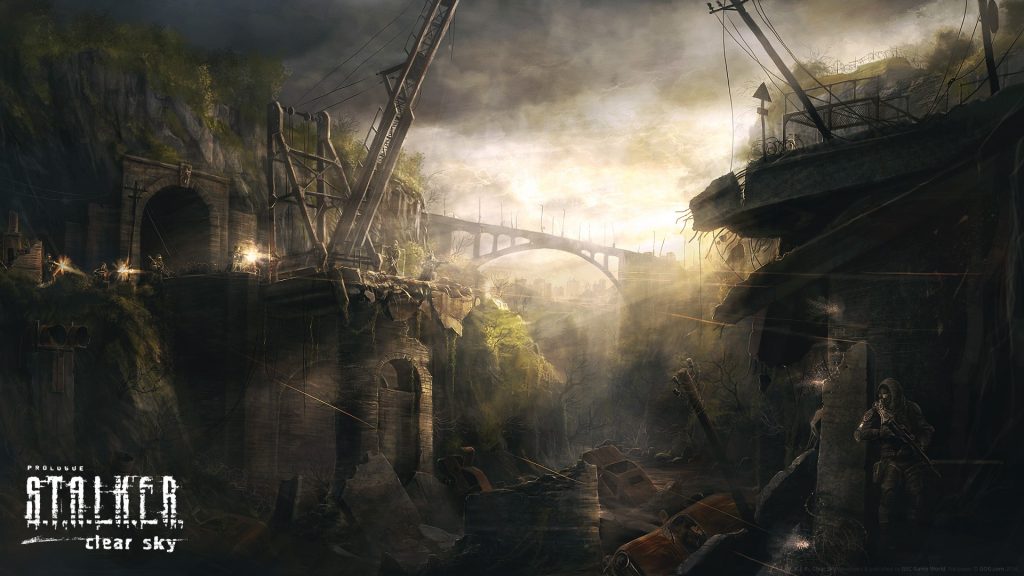


 (7 votes, average: 3.29 out of 5)
(7 votes, average: 3.29 out of 5)